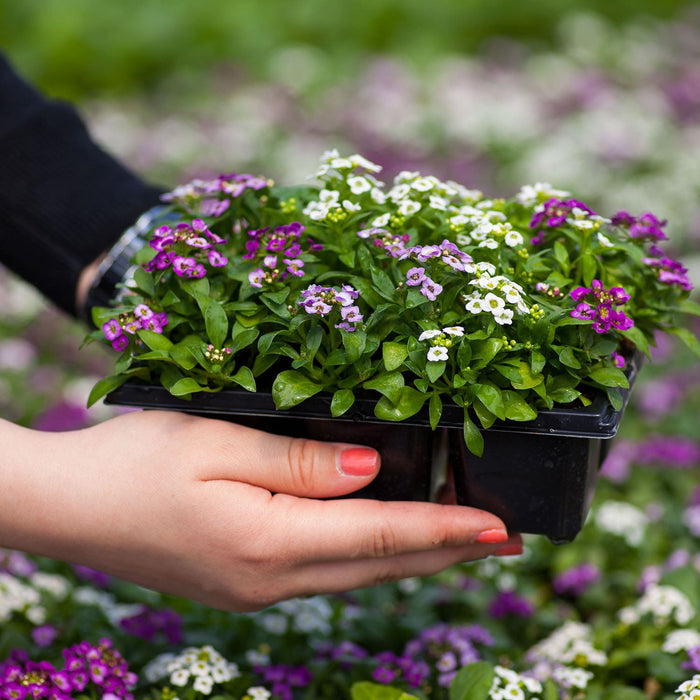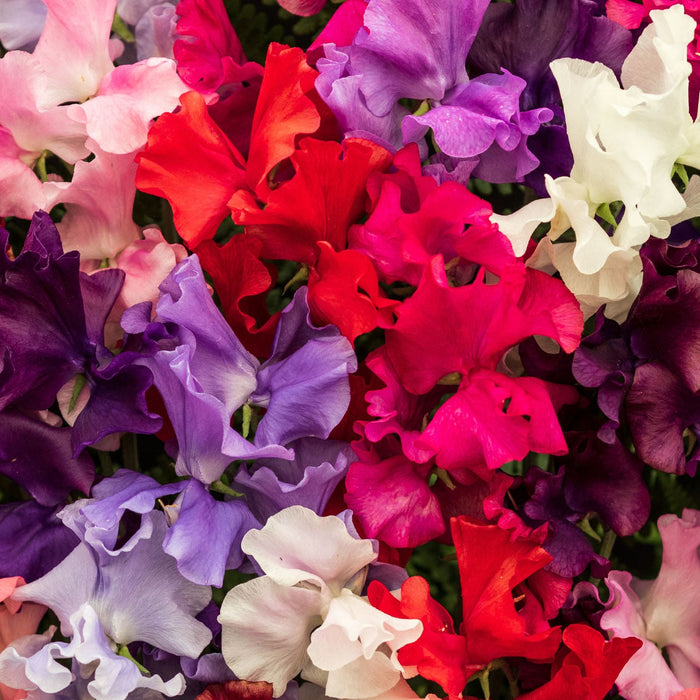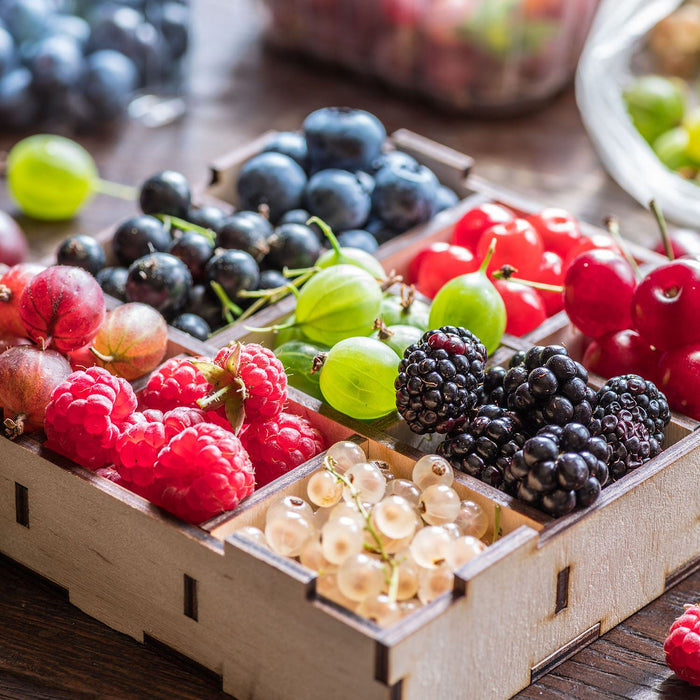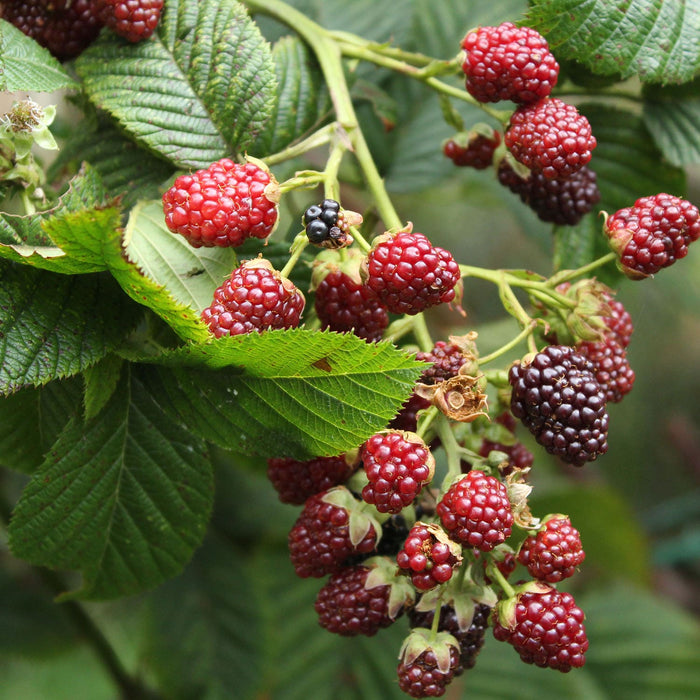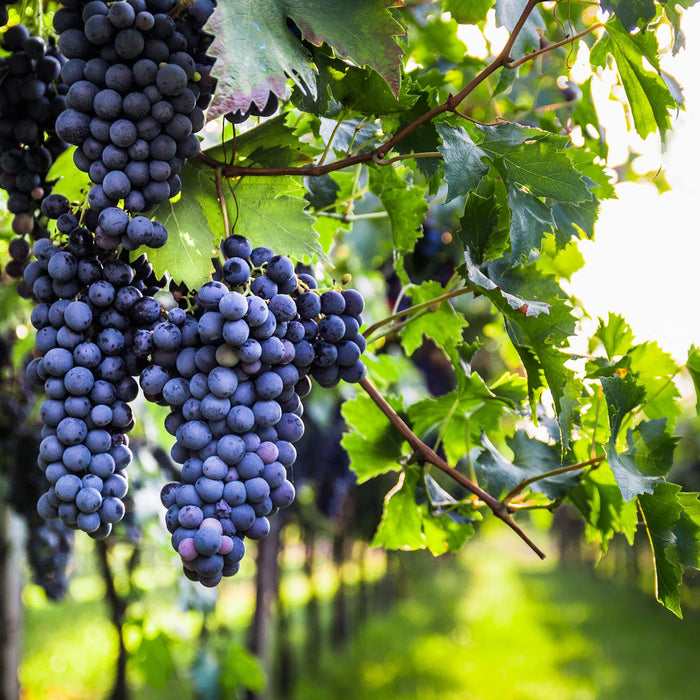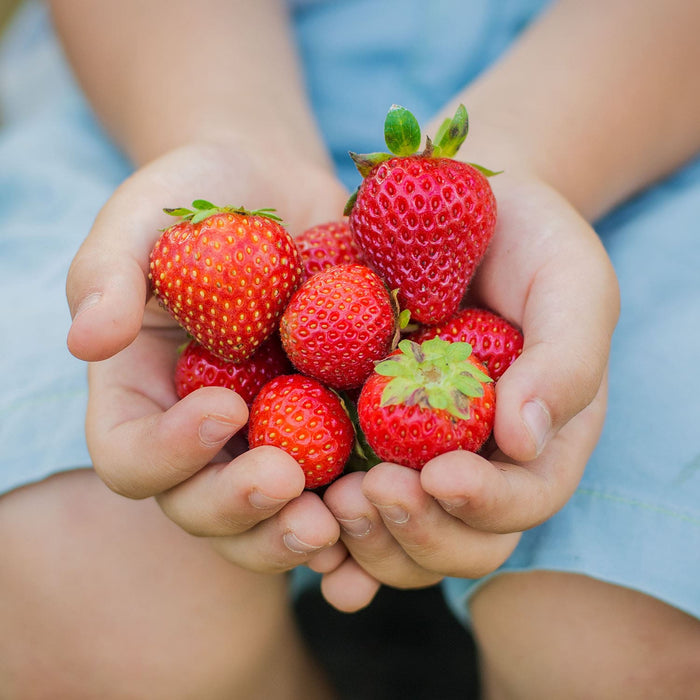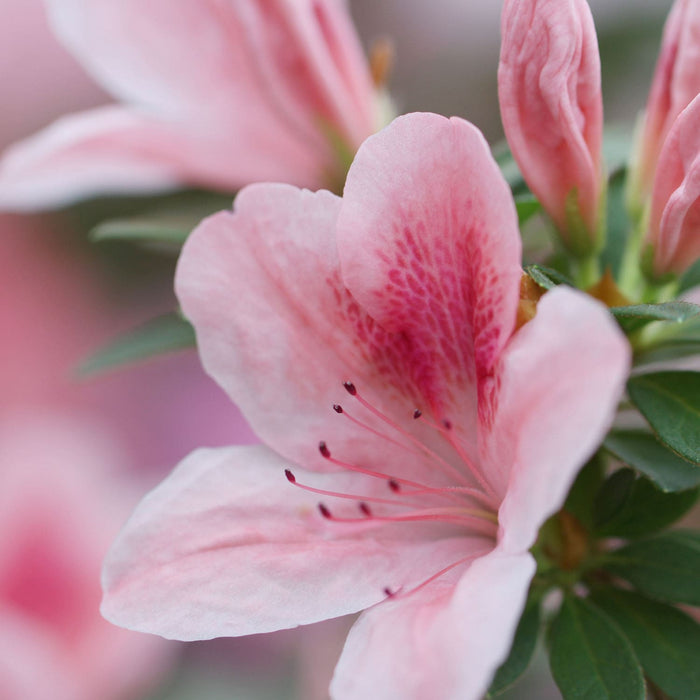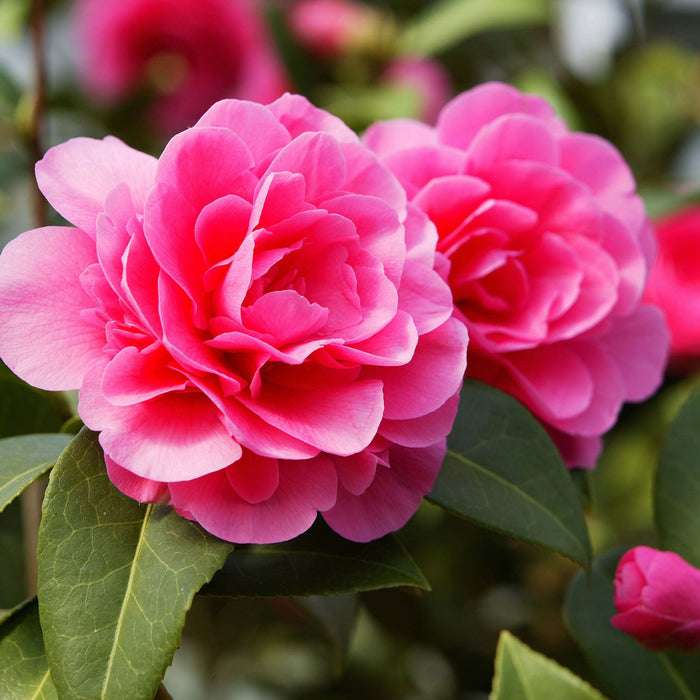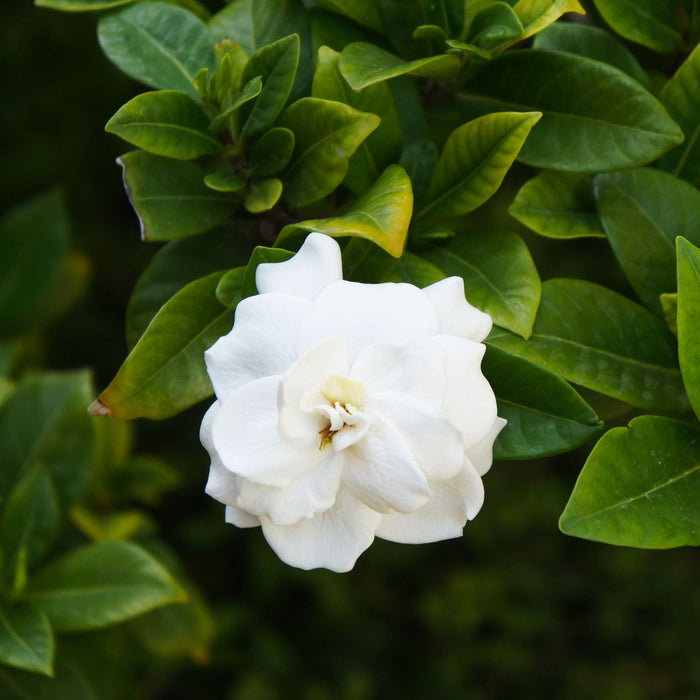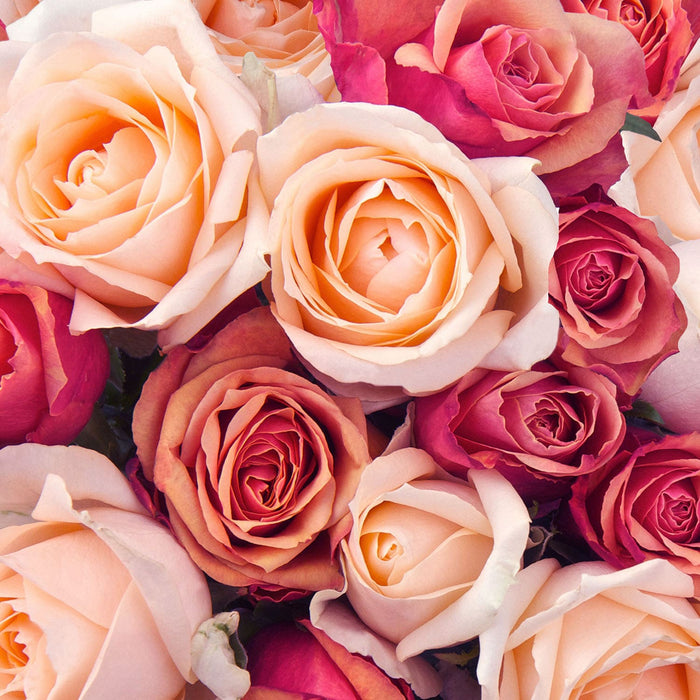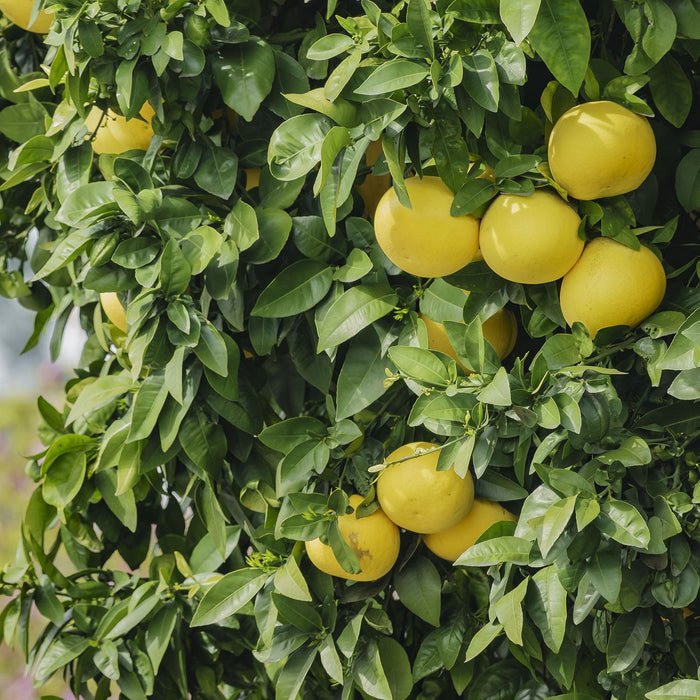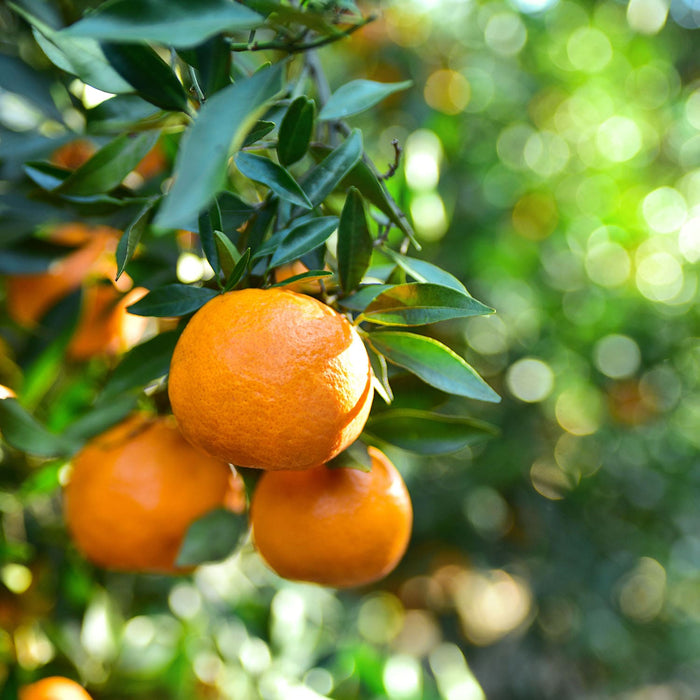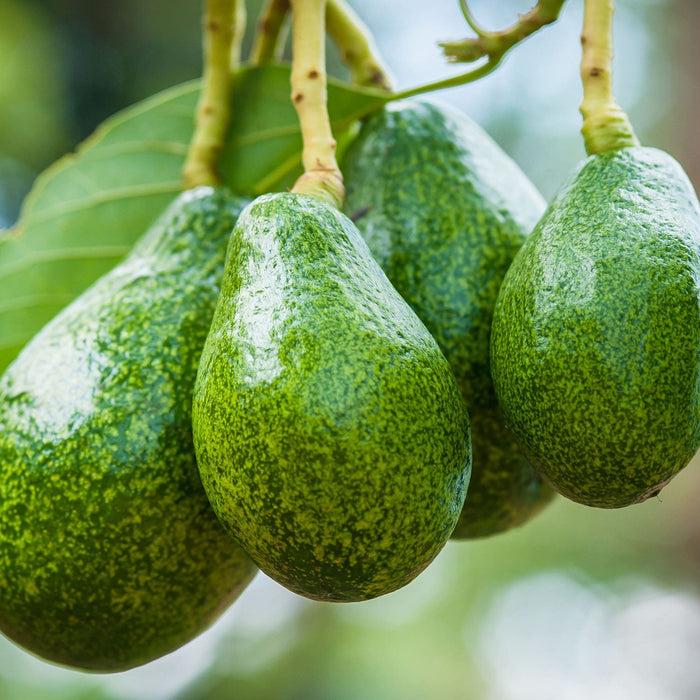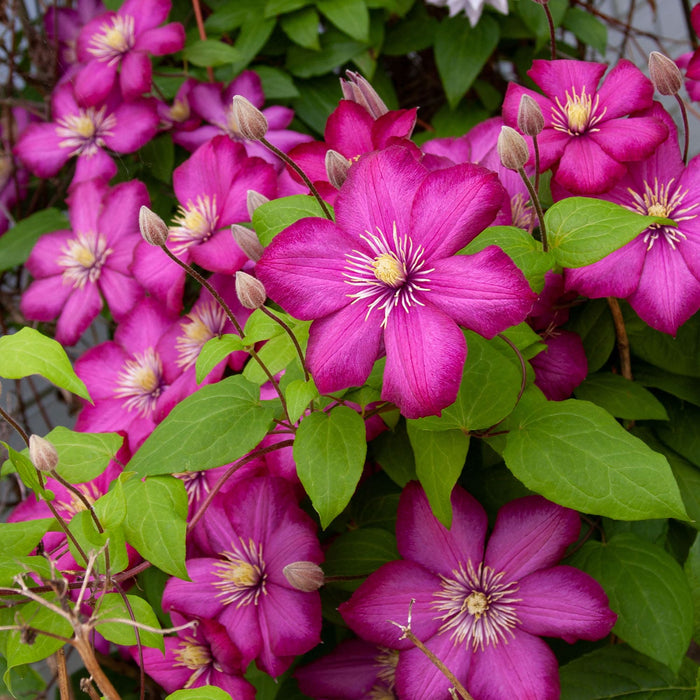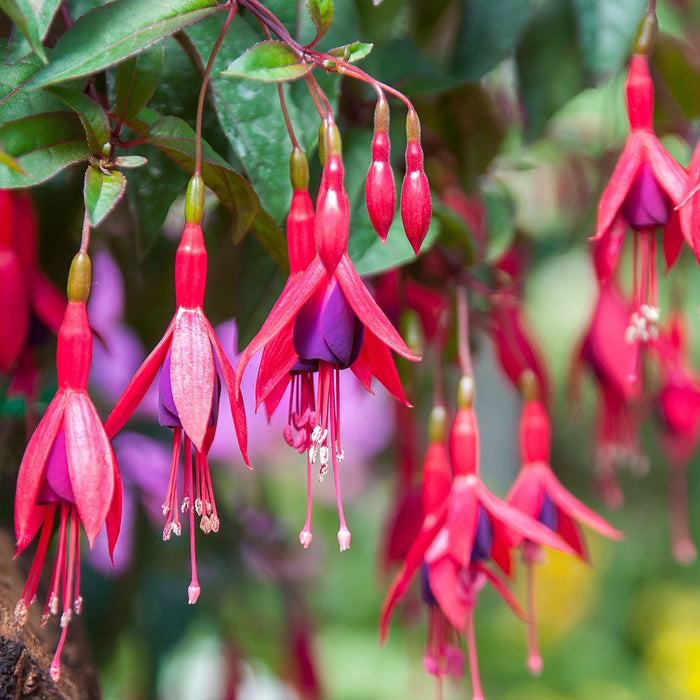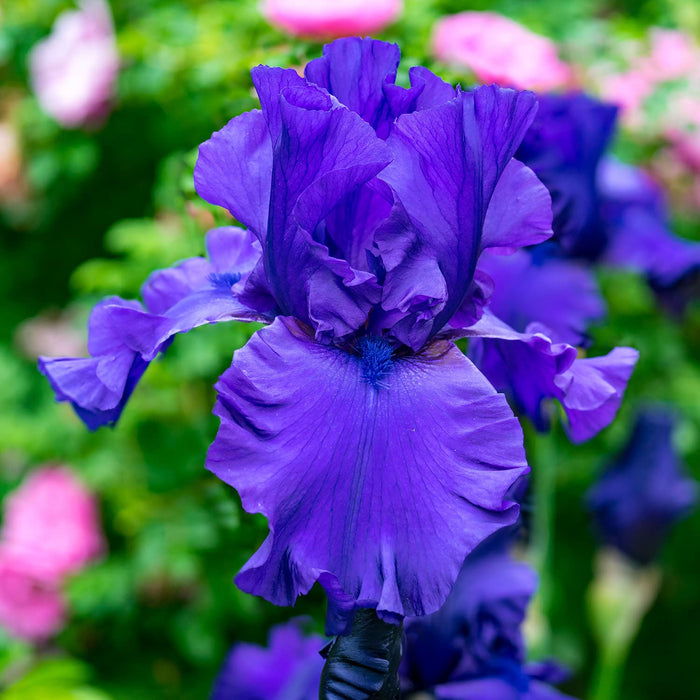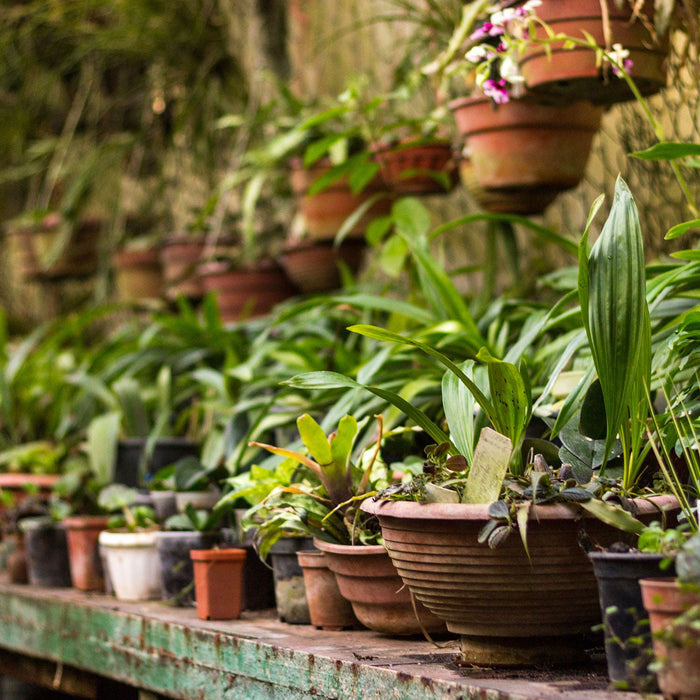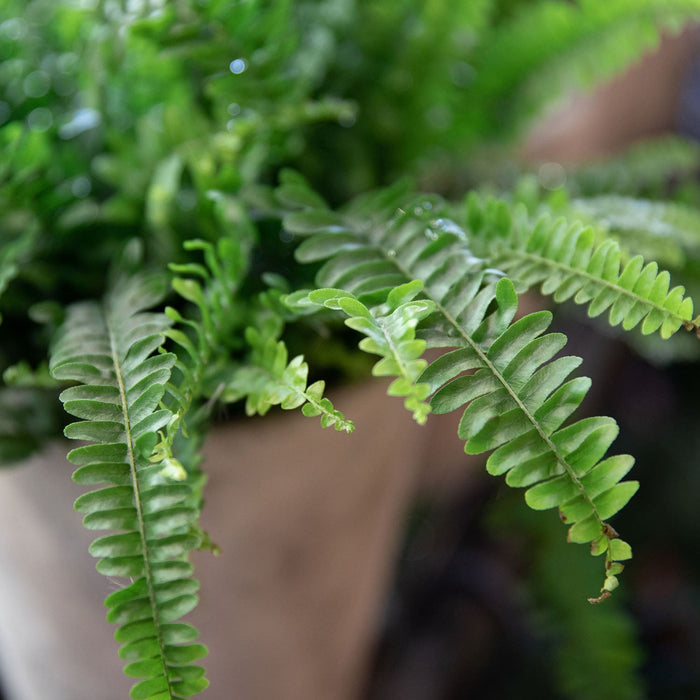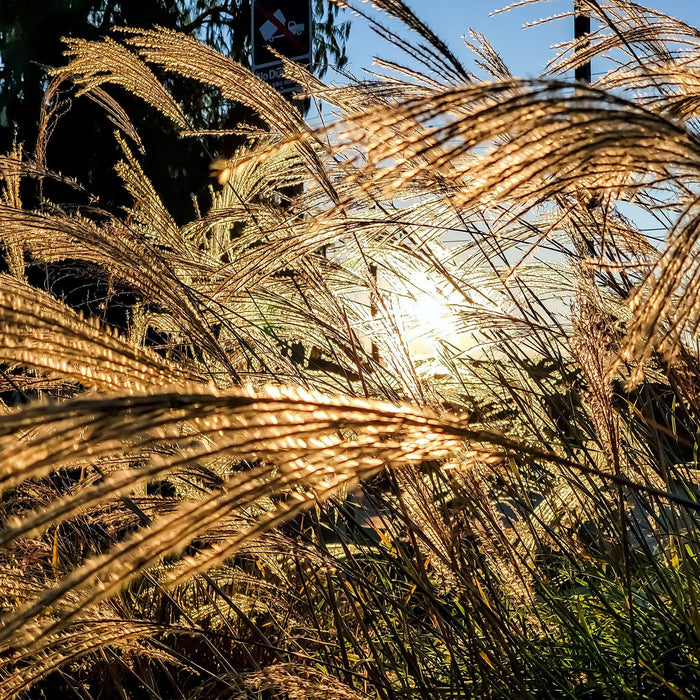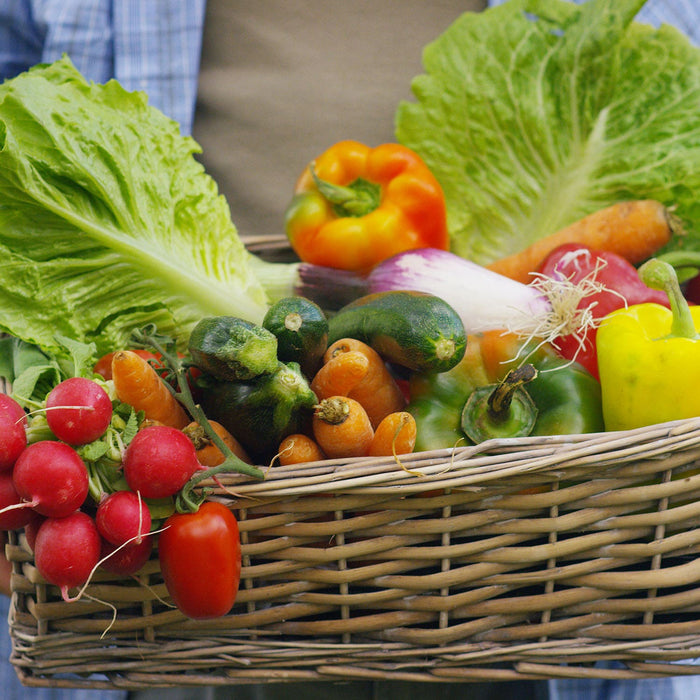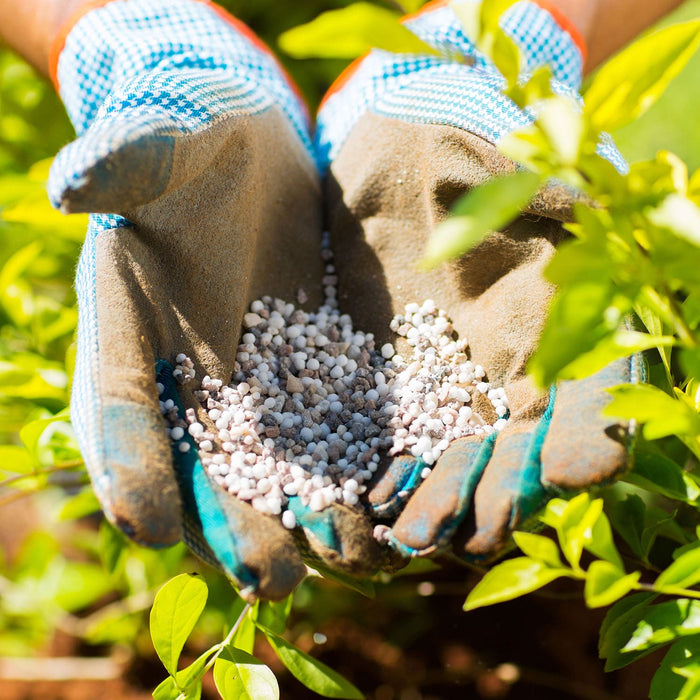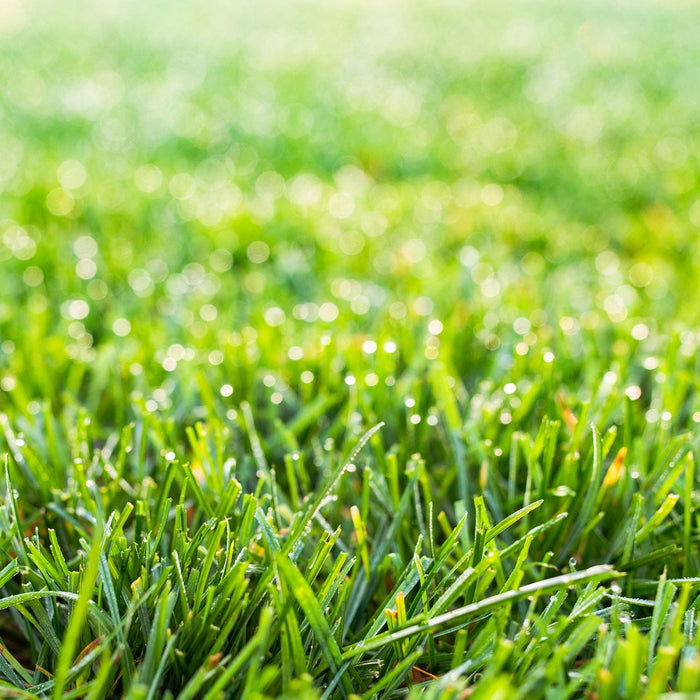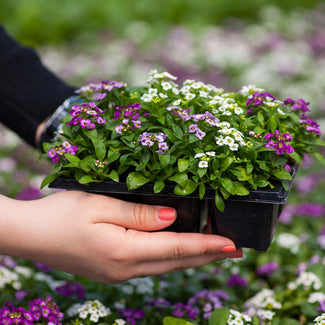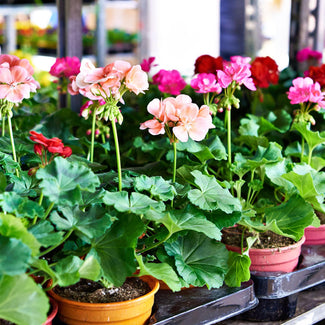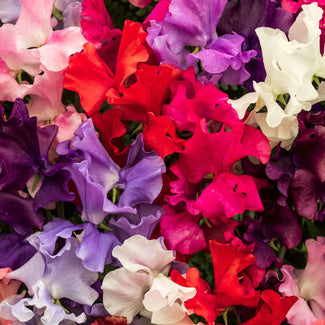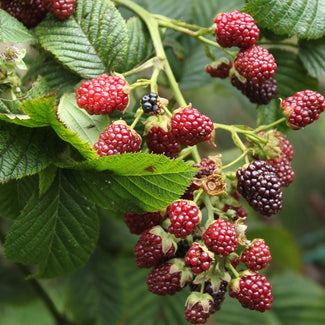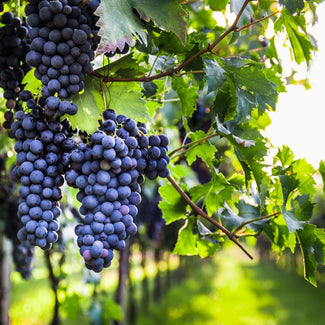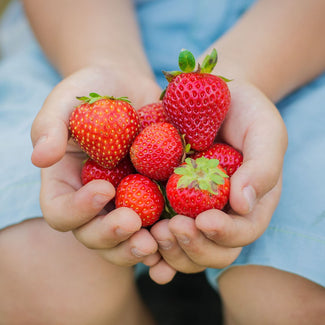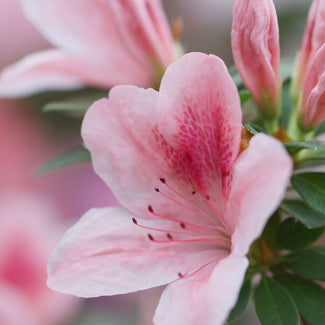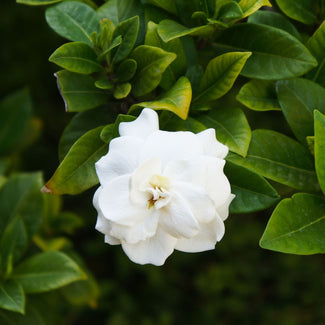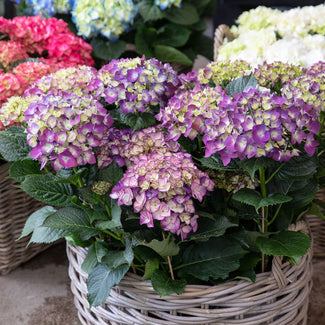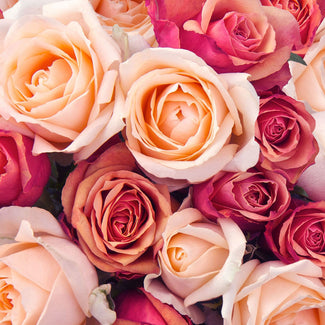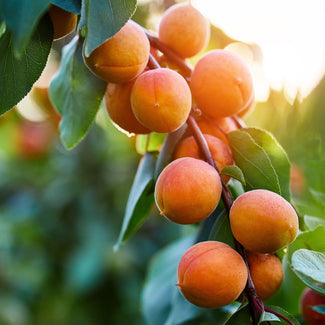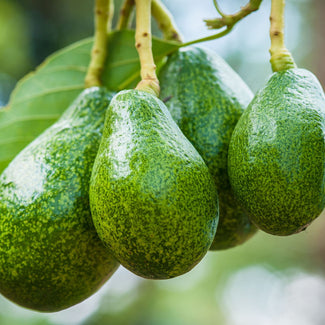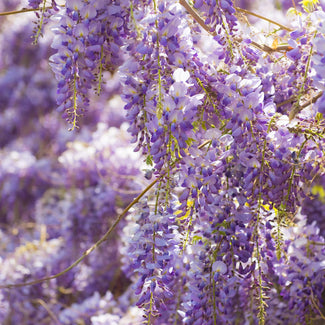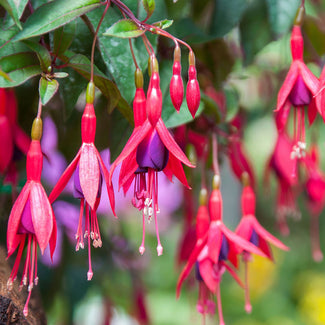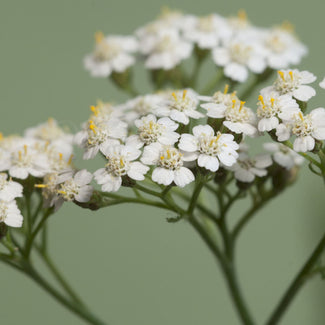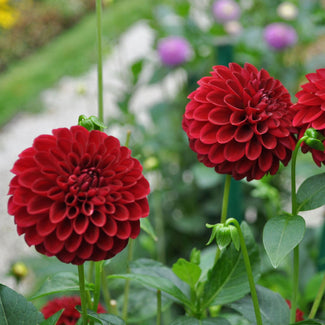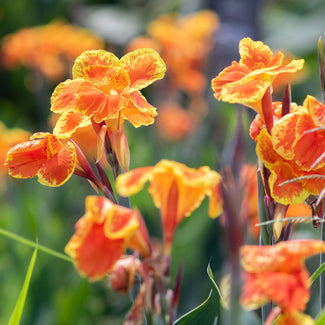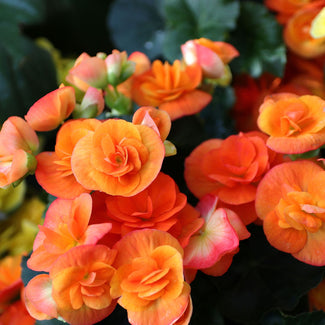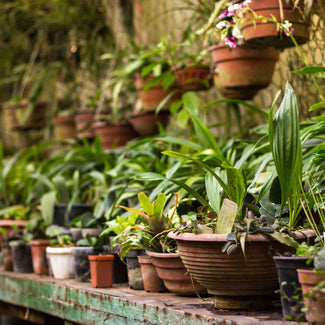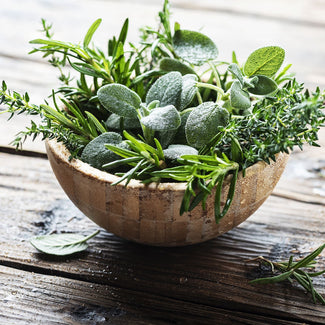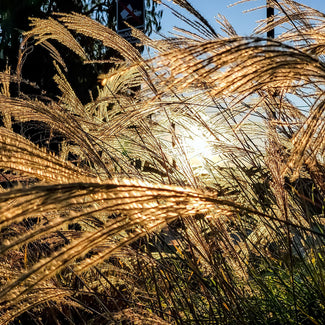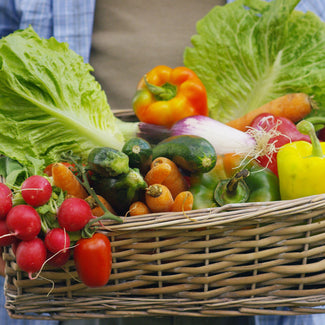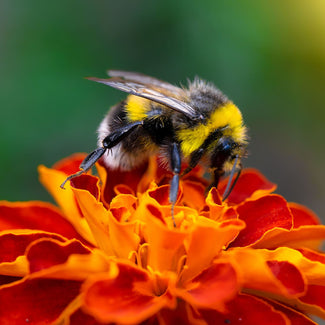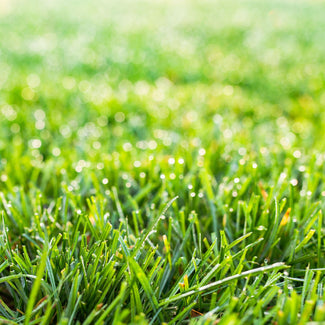January Gardening Checklist

Fellow Gardeners,
The information, dates, and techniques for January garden tasks in this blog are as accurate as I can currently offer. During the past four decades, I have cared for, nurtured, and observed tens of thousands of plants. With the help of many gardening friends, I have attempted to offer some useful information to help you with your own January gardening to-do list. Gardening is sharing. Any corrections, comments, or suggestions are appreciated and will improve future information.
Table of Contents:
Annuals
January is a great time to start planting some popular annual flowers. The weather in January is still mild enough that annual plants will have time to establish themselves well before they face hot weather.
• This month is a great time to plant cool-season annual flowers. Some choices for sun include pansies, violas, Iceland poppies, stock, English daisy, linaria, flowering cabbage, flowering kale, anemones and the ‘Bloomingdale’ series of ranunculus.
• In some shade, try annuals like English, fairy, or Chinese primrose, bedding cyclamen, or cineraria.
• Because of their quick growth and heavy flowering potential, annual garden flowers need more fertilizing than most other outdoor plants in the garden.
• Keep deadheading (removing spent flowers) from garden annuals to help them continue blooming abundantly!
• Fill in any bare spots in your annual beds or plant containers with transplants.
Geraniums (Pelargonium):
• This group includes Ivy geraniums, Zonal geraniums (also called “Common” geraniums), Martha geraniums, and the various scented geraniums. However, it does not include true geraniums (sometimes called “hardy” geraniums), which are discussed under Perennials.
• Martha types have completed their progressive cutting back now. Don’t cut them back any further until the fall, but begin pinching the tips regularly to create fuller plants and ultimately more flowers.
Sweet Peas:
• There is still time to plant sweet peas from seed, but don’t wait much longer!
• Plant from color packs or four-inch pots for an even quicker bloom.
• Tie them up or help them attach themselves to the netting, poles, or fence.
• The earliest (non-daylength sensitive) varieties will already be in bloom if you planted them in August or September. Be sure to keep old flowers pruned off regularly to encourage more buds.
• In spite of considerable mis-information, be aware that planting sweet peas earlier does not necessarily mean they will bloom earlier. Most sweet peas initiate flowers based on the length of the day, not when they were planted. Exceptions are a few of the non-daylength sensitive varieties.
For more information, watch & learn: How to Grow Sweet Peas with Steve Hampson
Wildflowers:
• Although later than suggested, there is still a chance to plant wildflowers from seed.
• Keep the young plants or germinating seeds watered during dry spells.
• Weeds will grow abundantly in a wildflower garden. Weed the area regularly, or they will easily overwhelm the flowers.
• For the best result, mix native wildflowers, like poppies and lupines in a jar with some clean, sharp sand. Shake the mixture for a couple of minutes, then spread the mix. The germination will be noticeably improved.
For more information, watch & learn: Gardening with Native Plants with James Maxwell
Poinsettias:
• Keep them indoors in a well-lit area. As long as you water them properly and are away from heater vents and other drafts, they should look ok. Don’t worry if they have dropped a few yellow leaves at the base.
• If you do take them outside, don’t cut them yet. Instead, keep them protected from frost and cold nights.
• No fertilizing is needed this month.
Fruiting Plants
January is the perfect time to plant easy-care fruit like raspberries, grapes, and strawberries!
Cane Berries:
• Last chance to prune most of these. Cut the canes that bore fruit earlier this year all the way to the ground. Do not prune the new canes that sprouted from the soil this spring; they will produce next season’s crop.
• If you didn’t do it last month, subtropical raspberries, like “Bababerry,” should be pruned this month. Since these mostly bear fruit on new growth, prune all of the canes down to about three inches from the soil. Suckers, adjacent to the main plant, can be dug up easily now and transplanted for additional plants or to give to friends.
• Plant new berries from dormant bare-root plants. Be sure to select varieties that are well suited to our climate.
Grapes:
• Time for a little grape vine care! If you didn’t do it in December, prune this month. Pruning techniques vary according to the plant’s age and according to whether it is a cane or spur bearing variety. Consult a reference such as the Sunset Western Garden Book before pruning.
• January is a good month to plant grapes. With some searching, you may be able to find dormant bare-root plants now. These are a great value, but do some research to ensure that you select an appropriate variety for our climate.
• About the first of the month should be your second application of dormant disease control. This should be a copper sulfate product, which is organic. Applying these products should be an annual chore, repeated every year to help control some very common fungal diseases.
Strawberries:
• Plant transplants from 4” pots or color packs (4” pots will have much better root systems and will usually easily out-produce color packs this late in the planting season).
• Alternatively, January is an excellent to plant strawberries from bare-root. This is the way farmers do it. They won’t look like much when you first plant them, but they will generally out-perform potted transplants - and they are less expensive.
• Pinch out the first two or three sets of flowers that your young plants will produce to encourage better root development and a stronger overall plant.
• Plant Alpine varieties now.
• Make sure to follow our February and March Checklists to learn how to care for strawberry plants!
For more information, watch & learn: How to Grow the Best Strawberries with Sarah Smith
Shrubs
• There are plenty of beautiful, easy-care shrubs in full bloom in January. Tree and shrub care are fairly simple. Here are some general shrub care tips and some more detailed shrub maintenance information about some common flowering shrubs.
• Winter blooming shrubs, like bird-of-paradise (strelitzia), pink powder puff (calliandra), cape honeysuckle (tecomaria), and Australian fuchsia (correa), are in full bloom now.
• Cut back Butterfly Bush (Buddleja) hard this month. A good rule of thumb is to cut it back about 75%. If you are trying to manage the plant in a small space, try cutting it back even more and pinch the new growth every few weeks through the spring to create more branching. This will keep even full-sized varieties to about five feet.
• Try to avoid shearing hedges now. New growth is very slow, and these cuts will be quite noticeable.
For more information, watch & learn: Hardy Flowering Shrubs with Dalia Brunner
Azaleas:
• Azaleas are now forming buds at the tips of their branches. Feed them aggressively with an organic high-phosphorus fertilizer (like the Down-to-Earth brand) from now until they’ve finished blooming, then switch to a standard organic “azalea” or “acid” fertilizer.
• January is a good time to plant new azaleas.
Camellias:
• Most sasanqua camellias are still either blooming or finishing up their bloom for the year. Feed these varieties with an organic “acid” or azalea/camellia fertilizer as soon as their bloom cycle has finished, but not while they are in flower.
• A few early-blooming japonica varieties will also be in bloom this month. This is a good month to begin shopping for these varieties. The selection will be good, and you will soon be able to see them in bloom. Since camellias are actually dormant (or not growing) while they are in bloom, this is a perfect month to plant them.
For more information, watch & learn: Gardening 101 Series | How to Plant & Maintain a Camellia
Gardenias:
• Your gardenias may look a little yellow and almost certainly will not be blooming. Don’t worry; they will revive with the onset of warmer weather about March or April!
• No need to fertilize these semi-tropical plants quite yet. Wait for warmer weather.
For more information, watch & learn: Gardenias for Southern California with Nicholas Stadden
Hydrangeas:
• Hydrangeas never look sadder than they do in January. They should have already been pruned (in about August or earliest September) and will be nearly completely dormant right now.
• Contrary to some references, do not prune hydrangeas in the winter. Hydrangeas bloom on one-year-old stems. Pruning now will eliminate most of next year’s flowers.
• There are a few exceptions to this last rule (and more and more every year). These are the newer “everblooming hydrangeas that are now on the market. These varieties bloom on their new growth, not their one-year-old growth. So they can be trimmed now it you so desire.
• If you want to try to get blue or lavender flowers on your otherwise pink plant, you need to start applying aluminum sulfate (usually called “Hydrangea Blueing Formula”) to the soil now. White-flowered varieties will not be affected, and not all pinks will be affected the same.
For more information, watch & learn: Re-blooming Hydrangeas with Nicholas Staddon
Roses:
• January is the best month for your annual rose pruning. Anytime during the month will suffice, but the middle-to-latter part of the month is ideal.
• Apply a dormant disease and insect spray to the canes and immediate soil around your newly-pruned roses.
• Rake away old mulch and add fresh mulch under roses. Immediately after pruning is the best time to do this.
• If you prefer, add a small amount of Epsom salts under freshly-pruned roses. Many gardeners believe this encourages more cane development on roses.
• Plant bare-root or early-season rose bushes now. January offers the best selection of the year.
For more information, watch & learn: How to Prune Your Roses With Laura Weaver, Bare Root Roses with Dalia, & How to Plant and Care for Roses
Trees
• Proper tree care means many of your trees need to be pruned in late winter or early spring. January is getting towards the end of tree pruning season in California, but you still have some time. Here are some general tree pruning tips and more specific tree pruning techniques and care tips for certain types of trees.
• January is still a good time to prune most trees (except for tender sub-tropical trees like ficus, coral tree, avocado, citrus, et cetera). Few birds are nesting in trees during this season.
• This is an especially good time to prune coniferous trees like pines and cypress since their pests, various bark beetles, are not active this time of the year.
• For sycamore and ash trees infested with summer fungal diseases, this is the time to apply a dormant fungicide. Consult an authority for the specific fungicide need for your situation.
• Double check any staking and ties that might be on your young trees. Consult online resources for correct staking techniques, since most trees are staked incorrectly and excessively.
Deciduous Fruit Trees:
• This and last month are the usual times to perform annual dormant pruning on your fruit trees. Before making the first cut, check with a good, well-written reference on the particular technique for your specific variety. Improper pruning seriously damages many fruit trees, and each variety requires a different approach.
• Around the first of this month should be your second application of dormant disease control. This may be either a copper sulfate or lime-sulfur product (do not use lime-sulfur on apricots). Both of these are organic products. Applying these products should be an annual chore, repeated every year to avoid infestations of such diseases as peach leaf curl, shothole fungus, apple scab, brown rot, and many others.
For more information, watch & learn: Peach Tree Pruning with Steve Hampson
Citrus:
• Citrus are doing very little, if any, growing this month. However, there will be fruit developing on such varieties as grapefruit, lemon, some oranges and lime. A few late-bearing tangerines (also called Mandarins) may even be ready for harvest now. Navel oranges are probably ready, and grapefruits are almost ready. Try one, but if the sugars haven’t developed, wait another month and try again.
• January is a nice time to shop for citrus, but keep them in their outdoor plant nursery containers and wait at least a couple of months to plant them.
• Citrus leaf miner, which curl the new growth of plants, might still be visible on the foliage, but the pest is dormant at this time of the year, so no need to take any action for a while.
• Citrus pests like whitefly, aphids, scale, and mealybug are usually aided through a mutual, beneficial relationship with ants. Keep ants out of your citrus at all times. Start now by cutting back any limbs that touch the ground or a fence or wall. If ants are crawling up the trunk of the tree, apply Tanglefoot (a sticky, waterproof substance) to stop them.
For more information, watch & learn: Growing Citrus in Southern California with David Rizzo & Growing Citrus in Containers with Kathleen
Avocados:
• Avocados are growing very little, if at all, this time of the year. Certain winter-producing varieties may have fruit on them that can be picked this month.
• It is not unusual for your avocado to be dropping many of its leaves this month. New leaves will emerge shortly.
• This is not a good month to plant or transplant an avocado.
• Do not feed at all this month.
• Rains should take care of all your avocado’s irrigation needs this month.
• Be sure to keep a very thick blanket of mulch, compost, or fallen leaves under mature avocados at all times. Avocados need a cool root-run for good health.
• In marginal zones, continue to take precautions to avoid frost damage.
For more information, watch & learn: Edible Gardening: How to Grow Avocados in Southern California with Sarah Smith
Subtropical Fruits:
• (See also Avocados, and Citrus[c])
• Continue to take precautions for frost damage to sensitive species (see comments under “frost”).
• Do not fertilize until at least spring.
• Do not prune during the cool winter months.
• Many subtropical fruits are sensitive to too much moisture around the roots during cool weather. Water very carefully; very little, if at all, during the winter.
• Except for the ‘Beaumont’ variety, keep checking for fallen macadamia nuts. Continue to pick them off the ground weekly, as they may drop for up to three months. The ‘Beaumont’ variety will be picked directly off the tree in March.
Perennials
• January is a lovely time to plant some easy-care perennials and do a little perennial garden care. Perennial plant care is relatively simple; they need a little bit of maintenance in their first year, but once they’re established, many don’t require much care
• You still have time to plant perennial flowers. The cool fall and winter months are a great time to plant most California native plants, as it is the beginning of their growing season.
• January is the beginning of one of the prettiest times of the year for many of our California natives. Many of these are blooming and growing well now. A hike through our native coastal hills during this month and next will remind you of just how much our native plants enjoy this time of year.
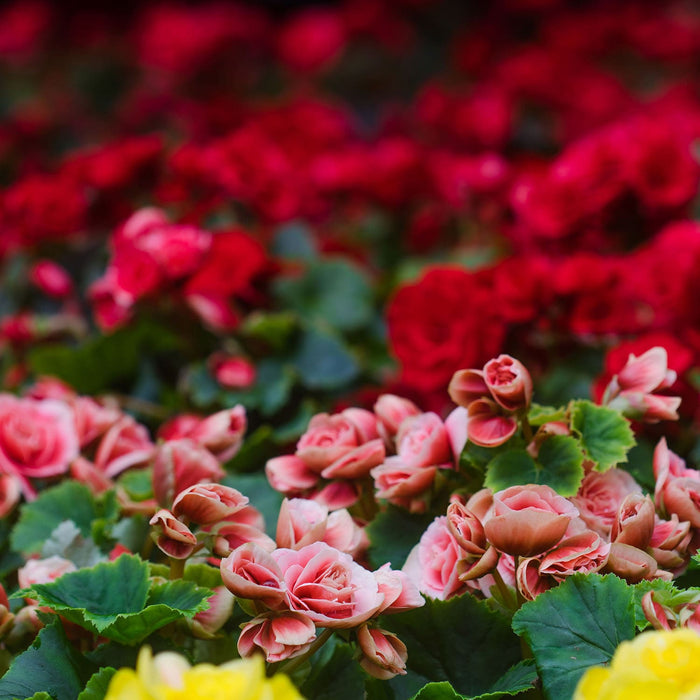
Perennials:
• (See also Bearded Iris, Bulbs/Rhizomes/Tubers, Cannas, Dahlias, Fuchsias, Geraniums, Ornamental Grasses, and Tuberous Begonias[d])
• Other than those cool-season perennials that are still blooming well (mentioned below), there is no need to fertilize growing perennial plants for at least another month or two.
• Other than California natives, many perennials are now semi-dormant and waiting for warmer soils and temperatures. There is not much to do this month with these perennials.
• Be sure not to accidentally damage any completely dormant perennials by cultivating or digging where their roots are.
• A few cool-season perennials are contradicting the dormant, sleepy period of their siblings. In between the raindrops and clouds, these rebels will be doing their best to try to bloom and beautify the garden. These might include alstroemeria (except in cold inland gardens), armeria, euryops daisy, forget-me-not (myosotis), hellebore, marguerite daisy, and perennial violas.
• Frost sensitive perennials, like felicia daisy, heliotrope, lamium, some lavender, pelargonium, pentas, plectranthus, and scaevola, may be damaged by nighttime frosts at this time of the year. Protect them as needed.
• Removing spent or old flowers regularly, especially from cool-season perennials, will help them to produce more new flowers.
For more information, watch & learn: Gardening 101 Series | How to Use Annuals vs. Perennials with Lynn Hillman & Gardening 101 Series | Pruning Lavender & Perennials with Dalia Brunner
Clematis:
• Most clematis varieties in our climate bloom on new growth. Because of this, like roses, they need an annual wintertime pruning. January is the best time to do this pruning. However, there are a few exceptions to this rule, so check with us on your particular hybrid for the best advice.
• Do not fertilize this month. Reduce or eliminate watering as well.
Wisterias:
• At this point in the year, the spring flower buds are visible on wisteria plants. They are much fatter than the nearby leaf-only buds and may be on short, stubby, woody growths called “spurs.” Be sure to preserve these as the same spur will often bear flowers for several years.
• Now is the time for pruning established plants! If you didn’t last month, this is the time of your final pruning until after the blooms are done and new growth begins in the spring. The plants should be leafless now, which makes the job a lot easier. First, notice the new growth that occurred last year. The point on the stem where last year’s growth began and the prior years ended should be easy to locate by noticing the obvious change in the stem/bark color. Now, cut all of this unwanted new growth to two or three buds above last year’s resting point.
• Training young plants: If you didn’t last month, tie in place any long, twining stems in the direction you want them to grow. Prune off any wayward stems completely at their source and eliminate stems that are hopelessly tangled. Ensure that the support you are training the plant onto is very strong, as wisterias are heavy plants.
• No need to fertilize now, and rains should take care of any irrigation needs, except on very newly planted plants.
Fuchsias:
• If you cut your fuchsias back in November (in coastal areas) and have been feeding them, you should be pinching the tips of the new growth. Keep feeding and pinching every couple of weeks through the end of March, and then let them bloom. You’ll have a full and glorious plant with hundreds of flowers!
• If re-potting is needed, the best time to do this is at the same time as the annual cut-back.
Groundcovers:
• Cool-season groundcovers are still growing and blooming well.
• On sloped areas, this is not a good time to do any significant planting. Winter rains and erosion are too much of an issue.
• California native groundcover plants, like ceanothus, coyote brush (Baccharis) and arctostaphylos (manzanita), are growing nicely now in the cool, moist weather. This is a good month to plant these natives, but be careful on slopes.
• Warm-season groundcovers are just sitting through the winter now. No fertilizing and no pruning are needed at this time of the year.
For more information, watch & learn How to Plant & Grow Groundcover with Dalia Brunner
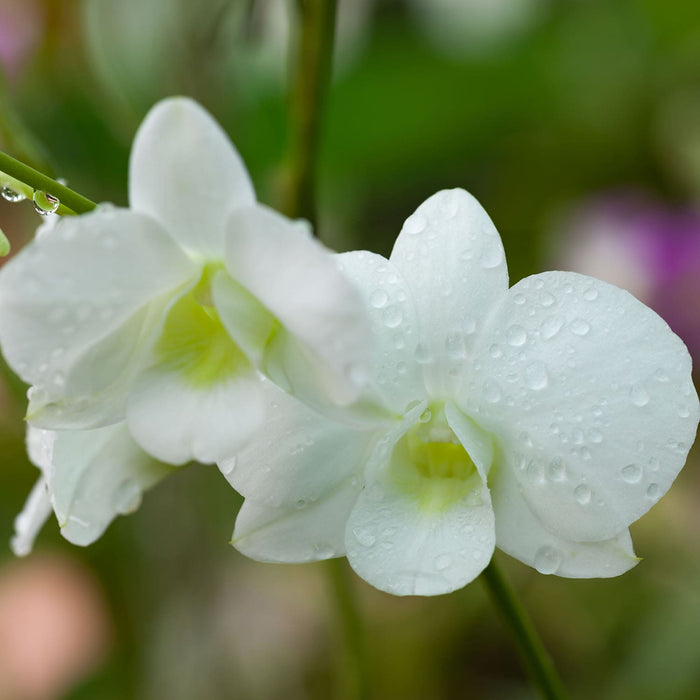
Orchids (outside grown):
• Cymbidiums may be setting buds or even blooming. Continue feeding with a high phosphorus fertilizer through the end of their bloom period.

Bulbs, Rhizomes, Tubers, etc.:
• Purchase summer blooming bulbs. The “second bulb season” in southern California includes such favorites as dahlia, tuberous begonia, gladiolus, caladium, calla, canna, tuberose, most true lilies, and Mexican shell flower (tigridia). These dormant bulbs, rhizomes, tubers, and corms arrive at nurseries during the second half of the month. It is a bit too early to plant some of these but buy them from our plant & garden store now, while the supply is good.
• It is not unusual for paperwhite narcissus in the garden to bloom in January (or even earlier), although most narcissus won’t flower for another month or two.
• Start planting gladiolus and lilies now but wait until late February or March for dahlia, tuberous begonia, caladium, calla, canna, tuberose, and Mexican shell flower.
• If gladioli are planted in two-week intervals, rather than all at once, you will have a much longer bloom period.
• If you have put any tulips, hyacinth, or crocus into the refrigerator last Fall for chilling, don’t forget about them. This is the last chance to get them planted.
• Some very early bulbs may sneak a few flowers out late in the month, especially if the weather is warm. These include the earliest chasmanthe, crocus, ipheion, leucojum, and narcissus.
• Bedding cyclamen, although not generally referred to as a bulb, are in full bloom throughout Orange County.
• Many ornamental oxalis are winter-blooming, non-invasive, and naturalize easily. These are in full bloom now.
For more information, watch & learn: Gardening 101 Series | How Do I Plant Spring Bulbs?
Bearded Iris:
• Bearded iris is essentially evergreen in Orange County. Ignore what most national gardening books may say about them being cut back and going dormant in the winter.
• In January Orange County gardens, bearded irises will be slowly pushing out new growth while last year’s growth fades away. If you pay close attention, you will even notice the gradual transition of last year’s foliage slowly giving way to the new growth of this year. Remove the outer (older) leaves as they turn completely brown by giving them a gentle tug.
Dahlias (tuberous types):
• Tubers should be out of the ground by now and quietly resting somewhere in the garage or other cool, dry location.
For more information, watch & learn: Lew Whitney's Secrets to Growing and Maintaining Dahlias
Cannas:
• Purchase dormant canna roots now. These dormant roots arrive at nurseries during the second half of the month. The selection is good this month so shop early, but wait until about the end of February or early March to plant them.
• Cannas in the ground should have their top growth cut to the soil about now. They can also be easily dug up and divided this month.
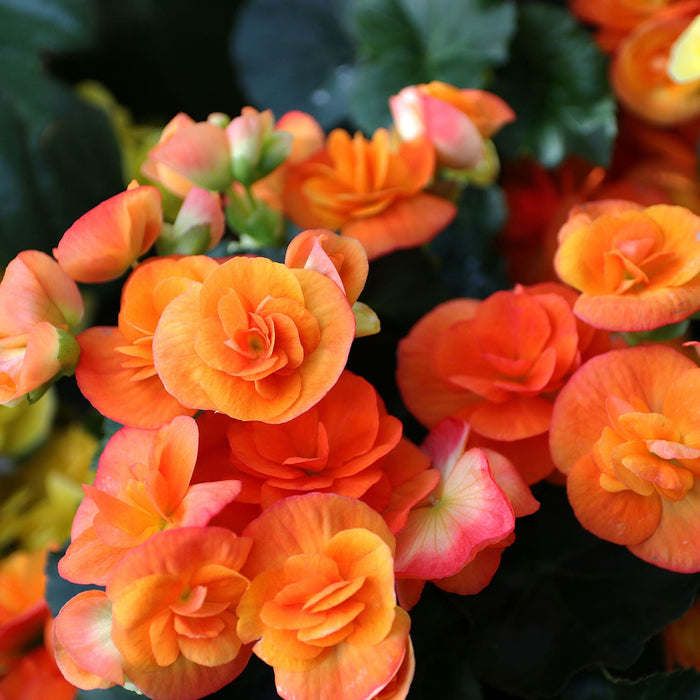
Tuberous Begonias:
• Tuberous begonia tubers are arriving in nurseries this month. It is too early to plant them, but it is a great time to buy them from our outdoor garden store while the selection is good. Store them in an open box with dry peat moss, perlite, or sawdust. Place the box in a cool, dark location until March, when it’s time to sprout them.
• Search out the new fragrant tuberous begonias. They are just beginning to become available to home gardeners, but are worth hunting for.
Foliage Plants:
• Non-blooming plants and foliage plants, like ferns, herbs, and ornamental grasses are usually dormant in January. Some types of ornamental grasses need to be cut down now to leave room for new foliage, and it's a good time for planting some herbs. Here are some tips for foliage plants and ornamental grasses care.
Ferns:
• Most ferns are still pretty much sleeping right now. There’s no need to fertilize a dormant fern, and irrigation can be minimal! In Orange County, most ferns, except for native species, will still be evergreen. But they are growing slowly, if at all.
Herbs:
• Plant cool-season herbs like cilantro, parsley, chervil, salad burnet, chives, garlic chives, arugula, fennel, dill, borage and sorrel.
• Many annual or short-lived herbs that can be planted now include anise, arugula, catmint, catnip, chervil, chamomile, chives, cilantro, comfrey, dill, fennel, garlic chives, lovage, parsley, salad burnet, and sorrel.
• Many other herbs are essentially year-round in our mild climate and can be planted at any time of the year. Some of these include chives, comfrey, feverfew, lavender, lemon balm, lemongrass, and rosemary.
For more information, watch & learn: Unique and Unusual Herb Plants with Sarah Smith
Ornamental Grasses:
• January is a good time for cutting back ornamental grasses. Some ornamental grasses are best cut to the ground each year and allowed to grow fresh foliage. But be careful; not all grasses appreciate this treatment. Some that do like a cut right now include Japanese Blood Grass (Imperata), Japanese Forest Grass (Hackonakloa), fountain grasses (Penisetem), Deer Grass (Meulenbergia), and Miscanthus. These should be cut to just a few inches above the soil line any time during the cool winter months.
For more information, watch & learn: Low Water Ornamental Grasses with James Maxwell
Vegetables:
• There’s still time to plant cool-season vegetables! Use transplants or seeds to start arugula, broccoli, Brussels sprouts, cabbage, collards, endive, kale, kohlrabi, lettuce, mustard, peas, and spinach. Start beets, carrots, parsnip, radish, rutabaga, and turnips from seed only.
• Fava beans will begin producing this month. To aid their production, cut off the top couple of inches of each growing tip. This will divert some of their energy from growing leaves into pod production.
• January is a good time to plant a second crop of onions, garlic, and shallots (the main crop should have been planted in October).
• Now is the time to purchase and begin planting of larger perennial vegetables like rhubarb, artichoke, horseradish, and asparagus. Bare-root plants should be available now. Horseradish can be quite invasive, so keep it in a container.
• If you prefer to grow your summer vegetables from seed rather than transplants (though keep in mind, the selection is much greater from seeds), this is a good time to shop for these; but most of these won’t go into the ground for about two more months. If you’re getting a head start with them on the windowsill, you can start in about a month.
• Feed cool-season vegetables regularly and control weeds before they get large.
For more information, watch & learn: Winter Edibles with David Rizzo - Winter Edibles with David
Cool Season Vegetable Garden with Suzanne Hetrick
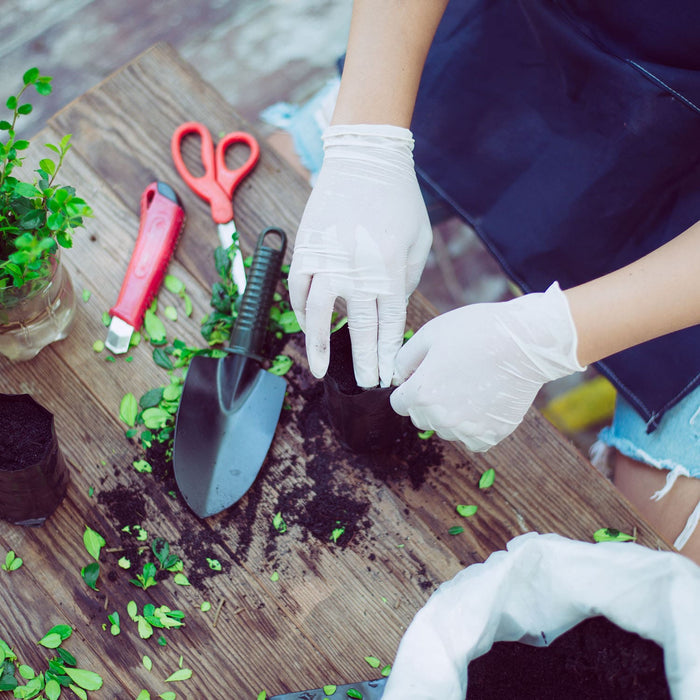
General Gardening Info
• Your spring gardening checklist should also include some of the following tasks. You can use this January gardening checklist to make sure you’ve got all your bases covered and your garden is well prepared for the growing season.
Beneficial Insects:
• Soon many of your garden fruits will be in bloom. Insects pollinate many of these, especially apples, apricots, nectarines, peaches, and plums. The European honeybee population in southern California has been decimated by a combination of urban sprawl and parasites—their populations are down by as much as 90% compared to just a few years ago! However, many of our native pollinators, especially mason bees, perform this pollination task admirably. Now is the time to release these bees in your garden and to put out mason bee homes for them to populate and increase.
• Plant flowers that attract pollinators and other beneficial insects. Although not many pests are present this time of the year, it is a good time to get these plants in the ground so that they are blooming and well established for spring and summer. You can pick them up at our outdoor plant store.
• Release predacious Decollate Snails now. These will take some time to establish themselves in your garden, so be patient. Do not use any snail baits, which also harm Decollate Snails.
Fertilize:
• (See also the information under the individual plants)
• Most plants will not need much fertilizing this month. However, there are a few exceptions:
• Camellia, azalea, and lilac are all setting buds now for spring bloom. You can encourage this spring bloom with a high-phosphorus fertilizer applied now.
• Feed cool-season lawns (fescue, ryegrass, and bluegrass) now.
For more information, watch & learn: Gardening 101 Series | How Do I Fertilize and Why? with Steve Hampson
Frost:
• January is the most likely month for frost damage in most Orange County gardens, although December, February, and even March may produce frost days as well.
• Frost protection strategies include:
• Moving all potted plants & outdoor pottery planters to protected areas
• Covering tender plants with old sheets or special “frost cloths,” but do not let these touch the foliage. Also, be sure to remove these covers first thing in the morning, as heat will build up very quickly underneath them.
• Stringing sensitive plants with miniature outdoor Christmas lights. These radiate heat.
• Wetting the foliage. Once the temperatures get to freezing, the water will freeze on the surface of the foliage and insulate the leaf. It really works!
• If frost does occur, do not prune it off right away. Leaving the damaged foliage in place helps the plant protect itself from additional frosts. When new growth begins in spring, trim the plant back to just above where the live growth begins.
Lawns:
• Toward the first of the month, apply a pre-emergent weed control to prevent poa annua (annual bluegrass) from germinating. Your first application of this pre-emergent should have been in September.
• Feed cool-season lawns (fescue/marathon, bluegrass, ryegrass). These grasses are still growing and will need regular feeding with a high quality, slow-release fertilizer.
• Fertilizer run-off into our watersheds is a significant issue. Please use and apply fertilizers carefully and switch to organic choices wherever possible.
• Remember, cool-season lawns should be mowed about half an inch lower in the winter than in the summer.
Except along the immediate mild coast, warm-season lawns (Bermuda grass, St. Augustine, zoysia) are dormant now.
• If you over-seeded your warm-season grass with annual rye last fall, you should be feeding it all through the winter as it is actively growing and enjoying this time of the year.
• Rust can be an occasional problem on cool-season grasses, especially in the cool, damp weather of winter and earliest spring. Regular fertilizing is usually adequate to control the issue.

Pests & Diseases:
(See also the information under the individual plants and the Beneficial Insects[e] section)
• Keep an eye out for snails and slugs.
• Protect evergreen pears (Pyrus kawakamii) from fireblight.
• Control Argentine ants (the little black ones) now.
• Trap gophers now before the breeding season begins next month.
For more information, watch and learn: How to Identify & Eliminate Common Garden Pests
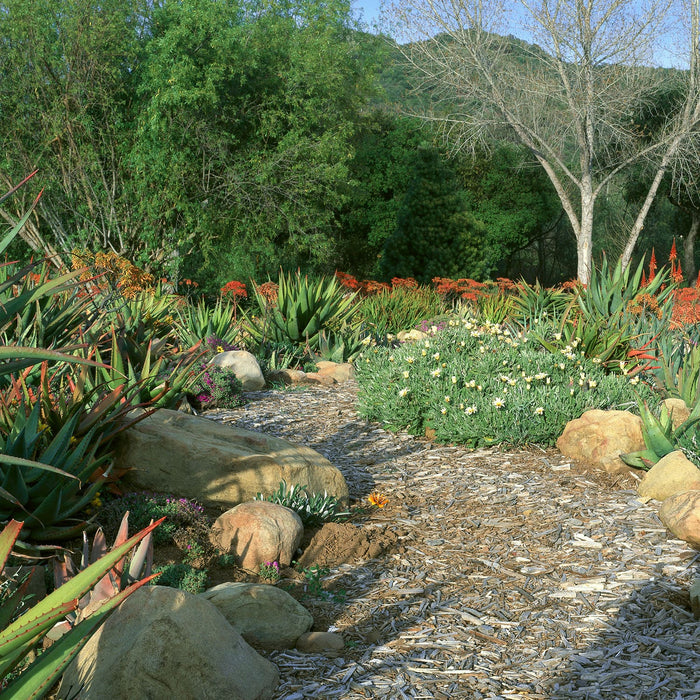
January is an excellent time to visit beautiful flower gardens in Orange County and beyond. There are many famous gardens in Southern California, and this is the perfect time to explore them and pick up some ideas for your garden.
Gardens that look terrific almost any time of the year include Sherman Library and Gardens (Corona del Mar), The Fullerton Arboretum (Fullerton), Los Angeles Arboretum (Arcadia), Huntington Library and Botanical Gardens (San Marino), and Quail Botanical Gardens (Encinitas)[h].
They closed, unfortunately.
In Huntington Beach and Laguna, make a visit to Niguel Botanical Preserve. Both of these are excellent examples of well acclimated plants for our climate and always fun to explore.
Mediterranean and California native plant gardens are entering their peak bloom season shortly. Rancho Santa Ana (now called the California Botanic Garden) in Claremont will begin showing some color this month.
Attend any of several rose bush pruning demonstrations throughout the area.
If you have not visited a California native plant garden before, now through March would be an excellent time to visit. A couple of the best are Rancho Santa Ana Botanic Garden (now called the California Botanic Garden) in Clairemont and The Santa Barbara Botanic Garden in Santa Barbara.
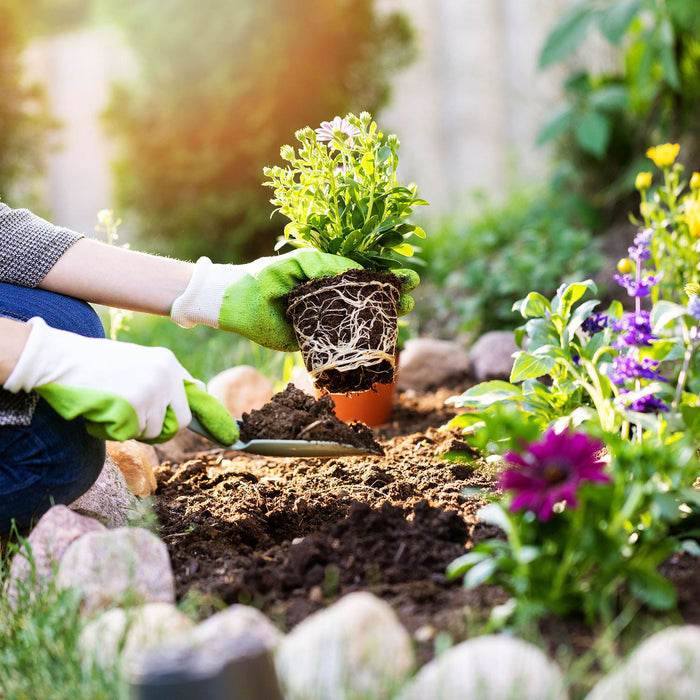
Planting:
• (See also the information under the individual plants)
• One of the best months for planting California native plants. They establish quickly in the cool, moist months, aided by winter rainfall.

Records, Catalogs, Books, and Organizations:
• Most serious gardeners keep some sort of a journal of their garden activities. Usually, these are set up in a month-by-month sequence and include random notes about the garden each month, additions and deletions to the garden, what is blooming, suggestions for the future, a record of fertilizations, and notes about the weather. If you don’t have a journal, well-stocked nurseries should have two or three different versions in stock.
• If you don’t have at least one gardening wall calendar, this is your last chance to pick one up, they’re usually on sale in January.
• Buy Pat Welsh’s “Southern California Organic Gardening.” Completely revised in 2009, this 468-page book is as essential as a spade and a pair of pruning shears. It’s written in a monthly format and is specifically for southern California gardens. Pat Welsh is perhaps the queen of southern California gardening, and every gardener should have a dirty, dog-eared version of this terrific book somewhere near the garden. This book is now out of print, but can usually be found online.
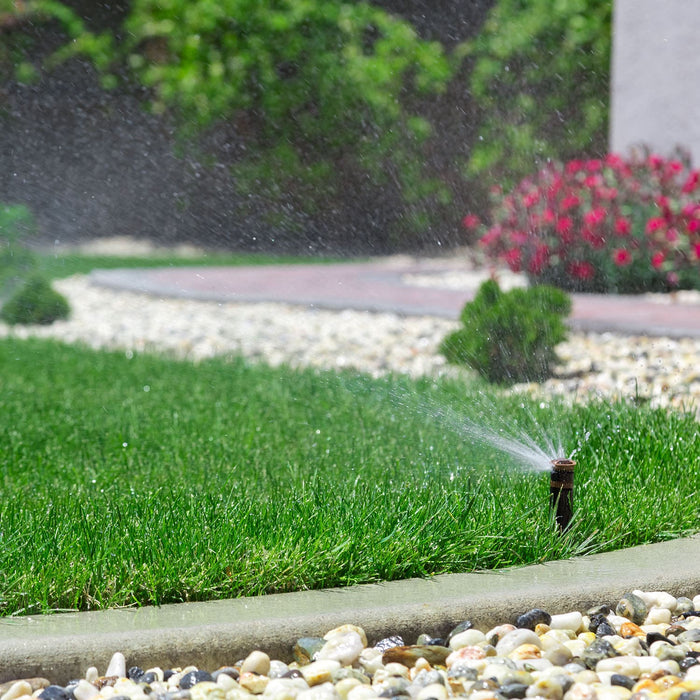
Water & Irrigation:
• (See also the information under the individual plants)
• In January, rainfall should do just about all your watering for you.
• Automatic sprinkler systems should still be set on “manual” and only used as needed.
• Check potted plants regularly—especially baskets under your gutters, which do not get the benefit of our winter rains.
For more information, watch & learn:
CA Friendly Solutions | How to Install & Use High Efficiency Sprinkler Heads with David Rizzo & CA Friendly Gardening Solutions | Testing Your Sprinkler System with Tracy Wankner
Annuals
January is a great time to start planting some popular annual flowers. The weather in January is still mild enough that annual plants will have time to establish themselves well before they face hot weather.
• This month is a great time to plant cool-season annual flowers. Some choices for sun include pansies, violas, Iceland poppies, stock, English daisy, linaria, flowering cabbage, flowering kale, anemones and the ‘Bloomingdale’ series of ranunculus.
• In some shade, try annuals like English, fairy, or Chinese primrose, bedding cyclamen, or cineraria.
• Because of their quick growth and heavy flowering potential, annual garden flowers need more fertilizing than most other outdoor plants in the garden.
• Keep deadheading (removing spent flowers) from garden annuals to help them continue blooming abundantly!
• Fill in any bare spots in your annual beds or plant containers with transplants.
Geraniums (Pelargonium):
• This group includes Ivy geraniums, Zonal geraniums (also called “Common” geraniums), Martha geraniums, and the various scented geraniums. However, it does not include true geraniums (sometimes called “hardy” geraniums), which are discussed under Perennials.
• Martha types have completed their progressive cutting back now. Don’t cut them back any further until the fall, but begin pinching the tips regularly to create fuller plants and ultimately more flowers.
Sweet Peas:
• There is still time to plant sweet peas from seed, but don’t wait much longer!
• Plant from color packs or four-inch pots for an even quicker bloom.
• Tie them up or help them attach themselves to the netting, poles, or fence.
• The earliest (non-daylength sensitive) varieties will already be in bloom if you planted them in August or September. Be sure to keep old flowers pruned off regularly to encourage more buds.
• In spite of considerable mis-information, be aware that planting sweet peas earlier does not necessarily mean they will bloom earlier. Most sweet peas initiate flowers based on the length of the day, not when they were planted. Exceptions are a few of the non-daylength sensitive varieties.
For more information, watch & learn: How to Grow Sweet Peas with Steve Hampson
Wildflowers:
• Although later than suggested, there is still a chance to plant wildflowers from seed.
• Keep the young plants or germinating seeds watered during dry spells.
• Weeds will grow abundantly in a wildflower garden. Weed the area regularly, or they will easily overwhelm the flowers.
• For the best result, mix native wildflowers, like poppies and lupines in a jar with some clean, sharp sand. Shake the mixture for a couple of minutes, then spread the mix. The germination will be noticeably improved.
For more information, watch & learn: Gardening with Native Plants with James Maxwell
Poinsettias:
• Keep them indoors in a well-lit area. As long as you water them properly and are away from heater vents and other drafts, they should look ok. Don’t worry if they have dropped a few yellow leaves at the base.
• If you do take them outside, don’t cut them yet. Instead, keep them protected from frost and cold nights.
• No fertilizing is needed this month.
Fruiting Plants
January is the perfect time to plant easy-care fruit like raspberries, grapes, and strawberries!
Cane Berries:
• Last chance to prune most of these. Cut the canes that bore fruit earlier this year all the way to the ground. Do not prune the new canes that sprouted from the soil this spring; they will produce next season’s crop.
• If you didn’t do it last month, subtropical raspberries, like “Bababerry,” should be pruned this month. Since these mostly bear fruit on new growth, prune all of the canes down to about three inches from the soil. Suckers, adjacent to the main plant, can be dug up easily now and transplanted for additional plants or to give to friends.
• Plant new berries from dormant bare-root plants. Be sure to select varieties that are well suited to our climate.
Grapes:
• Time for a little grape vine care! If you didn’t do it in December, prune this month. Pruning techniques vary according to the plant’s age and according to whether it is a cane or spur bearing variety. Consult a reference such as the Sunset Western Garden Book before pruning.
• January is a good month to plant grapes. With some searching, you may be able to find dormant bare-root plants now. These are a great value, but do some research to ensure that you select an appropriate variety for our climate.
• About the first of the month should be your second application of dormant disease control. This should be a copper sulfate product, which is organic. Applying these products should be an annual chore, repeated every year to help control some very common fungal diseases.
Strawberries:
• Plant transplants from 4” pots or color packs (4” pots will have much better root systems and will usually easily out-produce color packs this late in the planting season).
• Alternatively, January is an excellent to plant strawberries from bare-root. This is the way farmers do it. They won’t look like much when you first plant them, but they will generally out-perform potted transplants - and they are less expensive.
• Pinch out the first two or three sets of flowers that your young plants will produce to encourage better root development and a stronger overall plant.
• Plant Alpine varieties now.
• Make sure to follow our February and March Checklists to learn how to care for strawberry plants!
For more information, watch & learn: How to Grow the Best Strawberries with Sarah Smith
Shrubs
• There are plenty of beautiful, easy-care shrubs in full bloom in January. Tree and shrub care are fairly simple. Here are some general shrub care tips and some more detailed shrub maintenance information about some common flowering shrubs.
• Winter blooming shrubs, like bird-of-paradise (strelitzia), pink powder puff (calliandra), cape honeysuckle (tecomaria), and Australian fuchsia (correa), are in full bloom now.
• Cut back Butterfly Bush (Buddleja) hard this month. A good rule of thumb is to cut it back about 75%. If you are trying to manage the plant in a small space, try cutting it back even more and pinch the new growth every few weeks through the spring to create more branching. This will keep even full-sized varieties to about five feet.
• Try to avoid shearing hedges now. New growth is very slow, and these cuts will be quite noticeable.
For more information, watch & learn: Hardy Flowering Shrubs with Dalia Brunner
Azaleas:
• Azaleas are now forming buds at the tips of their branches. Feed them aggressively with an organic high-phosphorus fertilizer (like the Down-to-Earth brand) from now until they’ve finished blooming, then switch to a standard organic “azalea” or “acid” fertilizer.
• January is a good time to plant new azaleas.
Camellias:
• Most sasanqua camellias are still either blooming or finishing up their bloom for the year. Feed these varieties with an organic “acid” or azalea/camellia fertilizer as soon as their bloom cycle has finished, but not while they are in flower.
• A few early-blooming japonica varieties will also be in bloom this month. This is a good month to begin shopping for these varieties. The selection will be good, and you will soon be able to see them in bloom. Since camellias are actually dormant (or not growing) while they are in bloom, this is a perfect month to plant them.
For more information, watch & learn: Gardening 101 Series | How to Plant & Maintain a Camellia
Gardenias:
• Your gardenias may look a little yellow and almost certainly will not be blooming. Don’t worry; they will revive with the onset of warmer weather about March or April!
• No need to fertilize these semi-tropical plants quite yet. Wait for warmer weather.
For more information, watch & learn: Gardenias for Southern California with Nicholas Stadden
Hydrangeas:
• Hydrangeas never look sadder than they do in January. They should have already been pruned (in about August or earliest September) and will be nearly completely dormant right now.
• Contrary to some references, do not prune hydrangeas in the winter. Hydrangeas bloom on one-year-old stems. Pruning now will eliminate most of next year’s flowers.
• There are a few exceptions to this last rule (and more and more every year). These are the newer “everblooming hydrangeas that are now on the market. These varieties bloom on their new growth, not their one-year-old growth. So they can be trimmed now it you so desire.
• If you want to try to get blue or lavender flowers on your otherwise pink plant, you need to start applying aluminum sulfate (usually called “Hydrangea Blueing Formula”) to the soil now. White-flowered varieties will not be affected, and not all pinks will be affected the same.
For more information, watch & learn: Re-blooming Hydrangeas with Nicholas Staddon
Roses:
• January is the best month for your annual rose pruning. Anytime during the month will suffice, but the middle-to-latter part of the month is ideal.
• Apply a dormant disease and insect spray to the canes and immediate soil around your newly-pruned roses.
• Rake away old mulch and add fresh mulch under roses. Immediately after pruning is the best time to do this.
• If you prefer, add a small amount of Epsom salts under freshly-pruned roses. Many gardeners believe this encourages more cane development on roses.
• Plant bare-root or early-season rose bushes now. January offers the best selection of the year.
For more information, watch & learn: How to Prune Your Roses With Laura Weaver, Bare Root Roses with Dalia, & How to Plant and Care for Roses
Trees
• Proper tree care means many of your trees need to be pruned in late winter or early spring. January is getting towards the end of tree pruning season in California, but you still have some time. Here are some general tree pruning tips and more specific tree pruning techniques and care tips for certain types of trees.
• January is still a good time to prune most trees (except for tender sub-tropical trees like ficus, coral tree, avocado, citrus, et cetera). Few birds are nesting in trees during this season.
• This is an especially good time to prune coniferous trees like pines and cypress since their pests, various bark beetles, are not active this time of the year.
• For sycamore and ash trees infested with summer fungal diseases, this is the time to apply a dormant fungicide. Consult an authority for the specific fungicide need for your situation.
• Double check any staking and ties that might be on your young trees. Consult online resources for correct staking techniques, since most trees are staked incorrectly and excessively.
Deciduous Fruit Trees:
• This and last month are the usual times to perform annual dormant pruning on your fruit trees. Before making the first cut, check with a good, well-written reference on the particular technique for your specific variety. Improper pruning seriously damages many fruit trees, and each variety requires a different approach.
• Around the first of this month should be your second application of dormant disease control. This may be either a copper sulfate or lime-sulfur product (do not use lime-sulfur on apricots). Both of these are organic products. Applying these products should be an annual chore, repeated every year to avoid infestations of such diseases as peach leaf curl, shothole fungus, apple scab, brown rot, and many others.
For more information, watch & learn: Peach Tree Pruning with Steve Hampson
Citrus:
• Citrus are doing very little, if any, growing this month. However, there will be fruit developing on such varieties as grapefruit, lemon, some oranges and lime. A few late-bearing tangerines (also called Mandarins) may even be ready for harvest now. Navel oranges are probably ready, and grapefruits are almost ready. Try one, but if the sugars haven’t developed, wait another month and try again.
• January is a nice time to shop for citrus, but keep them in their outdoor plant nursery containers and wait at least a couple of months to plant them.
• Citrus leaf miner, which curl the new growth of plants, might still be visible on the foliage, but the pest is dormant at this time of the year, so no need to take any action for a while.
• Citrus pests like whitefly, aphids, scale, and mealybug are usually aided through a mutual, beneficial relationship with ants. Keep ants out of your citrus at all times. Start now by cutting back any limbs that touch the ground or a fence or wall. If ants are crawling up the trunk of the tree, apply Tanglefoot (a sticky, waterproof substance) to stop them.
For more information, watch & learn: Growing Citrus in Southern California with David Rizzo & Growing Citrus in Containers with Kathleen
Avocados:
• Avocados are growing very little, if at all, this time of the year. Certain winter-producing varieties may have fruit on them that can be picked this month.
• It is not unusual for your avocado to be dropping many of its leaves this month. New leaves will emerge shortly.
• This is not a good month to plant or transplant an avocado.
• Do not feed at all this month.
• Rains should take care of all your avocado’s irrigation needs this month.
• Be sure to keep a very thick blanket of mulch, compost, or fallen leaves under mature avocados at all times. Avocados need a cool root-run for good health.
• In marginal zones, continue to take precautions to avoid frost damage.
For more information, watch & learn: Edible Gardening: How to Grow Avocados in Southern California with Sarah Smith
Subtropical Fruits:
• (See also Avocados, and Citrus[c])
• Continue to take precautions for frost damage to sensitive species (see comments under “frost”).
• Do not fertilize until at least spring.
• Do not prune during the cool winter months.
• Many subtropical fruits are sensitive to too much moisture around the roots during cool weather. Water very carefully; very little, if at all, during the winter.
• Except for the ‘Beaumont’ variety, keep checking for fallen macadamia nuts. Continue to pick them off the ground weekly, as they may drop for up to three months. The ‘Beaumont’ variety will be picked directly off the tree in March.
Perennials
• January is a lovely time to plant some easy-care perennials and do a little perennial garden care. Perennial plant care is relatively simple; they need a little bit of maintenance in their first year, but once they’re established, many don’t require much care
• You still have time to plant perennial flowers. The cool fall and winter months are a great time to plant most California native plants, as it is the beginning of their growing season.
• January is the beginning of one of the prettiest times of the year for many of our California natives. Many of these are blooming and growing well now. A hike through our native coastal hills during this month and next will remind you of just how much our native plants enjoy this time of year.

Perennials:
• (See also Bearded Iris, Bulbs/Rhizomes/Tubers, Cannas, Dahlias, Fuchsias, Geraniums, Ornamental Grasses, and Tuberous Begonias[d])
• Other than those cool-season perennials that are still blooming well (mentioned below), there is no need to fertilize growing perennial plants for at least another month or two.
• Other than California natives, many perennials are now semi-dormant and waiting for warmer soils and temperatures. There is not much to do this month with these perennials.
• Be sure not to accidentally damage any completely dormant perennials by cultivating or digging where their roots are.
• A few cool-season perennials are contradicting the dormant, sleepy period of their siblings. In between the raindrops and clouds, these rebels will be doing their best to try to bloom and beautify the garden. These might include alstroemeria (except in cold inland gardens), armeria, euryops daisy, forget-me-not (myosotis), hellebore, marguerite daisy, and perennial violas.
• Frost sensitive perennials, like felicia daisy, heliotrope, lamium, some lavender, pelargonium, pentas, plectranthus, and scaevola, may be damaged by nighttime frosts at this time of the year. Protect them as needed.
• Removing spent or old flowers regularly, especially from cool-season perennials, will help them to produce more new flowers.
For more information, watch & learn: Gardening 101 Series | How to Use Annuals vs. Perennials with Lynn Hillman & Gardening 101 Series | Pruning Lavender & Perennials with Dalia Brunner
Clematis:
• Most clematis varieties in our climate bloom on new growth. Because of this, like roses, they need an annual wintertime pruning. January is the best time to do this pruning. However, there are a few exceptions to this rule, so check with us on your particular hybrid for the best advice.
• Do not fertilize this month. Reduce or eliminate watering as well.
Wisterias:
• At this point in the year, the spring flower buds are visible on wisteria plants. They are much fatter than the nearby leaf-only buds and may be on short, stubby, woody growths called “spurs.” Be sure to preserve these as the same spur will often bear flowers for several years.
• Now is the time for pruning established plants! If you didn’t last month, this is the time of your final pruning until after the blooms are done and new growth begins in the spring. The plants should be leafless now, which makes the job a lot easier. First, notice the new growth that occurred last year. The point on the stem where last year’s growth began and the prior years ended should be easy to locate by noticing the obvious change in the stem/bark color. Now, cut all of this unwanted new growth to two or three buds above last year’s resting point.
• Training young plants: If you didn’t last month, tie in place any long, twining stems in the direction you want them to grow. Prune off any wayward stems completely at their source and eliminate stems that are hopelessly tangled. Ensure that the support you are training the plant onto is very strong, as wisterias are heavy plants.
• No need to fertilize now, and rains should take care of any irrigation needs, except on very newly planted plants.
Fuchsias:
• If you cut your fuchsias back in November (in coastal areas) and have been feeding them, you should be pinching the tips of the new growth. Keep feeding and pinching every couple of weeks through the end of March, and then let them bloom. You’ll have a full and glorious plant with hundreds of flowers!
• If re-potting is needed, the best time to do this is at the same time as the annual cut-back.
Groundcovers:
• Cool-season groundcovers are still growing and blooming well.
• On sloped areas, this is not a good time to do any significant planting. Winter rains and erosion are too much of an issue.
• California native groundcover plants, like ceanothus, coyote brush (Baccharis) and arctostaphylos (manzanita), are growing nicely now in the cool, moist weather. This is a good month to plant these natives, but be careful on slopes.
• Warm-season groundcovers are just sitting through the winter now. No fertilizing and no pruning are needed at this time of the year.
For more information, watch & learn How to Plant & Grow Groundcover with Dalia Brunner

Orchids (outside grown):
• Cymbidiums may be setting buds or even blooming. Continue feeding with a high phosphorus fertilizer through the end of their bloom period.

Bulbs, Rhizomes, Tubers, etc.:
• Purchase summer blooming bulbs. The “second bulb season” in southern California includes such favorites as dahlia, tuberous begonia, gladiolus, caladium, calla, canna, tuberose, most true lilies, and Mexican shell flower (tigridia). These dormant bulbs, rhizomes, tubers, and corms arrive at nurseries during the second half of the month. It is a bit too early to plant some of these but buy them from our plant & garden store now, while the supply is good.
• It is not unusual for paperwhite narcissus in the garden to bloom in January (or even earlier), although most narcissus won’t flower for another month or two.
• Start planting gladiolus and lilies now but wait until late February or March for dahlia, tuberous begonia, caladium, calla, canna, tuberose, and Mexican shell flower.
• If gladioli are planted in two-week intervals, rather than all at once, you will have a much longer bloom period.
• If you have put any tulips, hyacinth, or crocus into the refrigerator last Fall for chilling, don’t forget about them. This is the last chance to get them planted.
• Some very early bulbs may sneak a few flowers out late in the month, especially if the weather is warm. These include the earliest chasmanthe, crocus, ipheion, leucojum, and narcissus.
• Bedding cyclamen, although not generally referred to as a bulb, are in full bloom throughout Orange County.
• Many ornamental oxalis are winter-blooming, non-invasive, and naturalize easily. These are in full bloom now.
For more information, watch & learn: Gardening 101 Series | How Do I Plant Spring Bulbs?
Bearded Iris:
• Bearded iris is essentially evergreen in Orange County. Ignore what most national gardening books may say about them being cut back and going dormant in the winter.
• In January Orange County gardens, bearded irises will be slowly pushing out new growth while last year’s growth fades away. If you pay close attention, you will even notice the gradual transition of last year’s foliage slowly giving way to the new growth of this year. Remove the outer (older) leaves as they turn completely brown by giving them a gentle tug.
Dahlias (tuberous types):
• Tubers should be out of the ground by now and quietly resting somewhere in the garage or other cool, dry location.
For more information, watch & learn: Lew Whitney's Secrets to Growing and Maintaining Dahlias
Cannas:
• Purchase dormant canna roots now. These dormant roots arrive at nurseries during the second half of the month. The selection is good this month so shop early, but wait until about the end of February or early March to plant them.
• Cannas in the ground should have their top growth cut to the soil about now. They can also be easily dug up and divided this month.
Tuberous Begonias:
• Tuberous begonia tubers are arriving in nurseries this month. It is too early to plant them, but it is a great time to buy them from our outdoor garden store while the selection is good. Store them in an open box with dry peat moss, perlite, or sawdust. Place the box in a cool, dark location until March, when it’s time to sprout them.
• Search out the new fragrant tuberous begonias. They are just beginning to become available to home gardeners, but are worth hunting for.
Foliage Plants:
• Non-blooming plants and foliage plants, like ferns, herbs, and ornamental grasses are usually dormant in January. Some types of ornamental grasses need to be cut down now to leave room for new foliage, and it's a good time for planting some herbs. Here are some tips for foliage plants and ornamental grasses care.
Ferns:
• Most ferns are still pretty much sleeping right now. There’s no need to fertilize a dormant fern, and irrigation can be minimal! In Orange County, most ferns, except for native species, will still be evergreen. But they are growing slowly, if at all.
Herbs:
• Plant cool-season herbs like cilantro, parsley, chervil, salad burnet, chives, garlic chives, arugula, fennel, dill, borage and sorrel.
• Many annual or short-lived herbs that can be planted now include anise, arugula, catmint, catnip, chervil, chamomile, chives, cilantro, comfrey, dill, fennel, garlic chives, lovage, parsley, salad burnet, and sorrel.
• Many other herbs are essentially year-round in our mild climate and can be planted at any time of the year. Some of these include chives, comfrey, feverfew, lavender, lemon balm, lemongrass, and rosemary.
For more information, watch & learn: Unique and Unusual Herb Plants with Sarah Smith
Ornamental Grasses:
• January is a good time for cutting back ornamental grasses. Some ornamental grasses are best cut to the ground each year and allowed to grow fresh foliage. But be careful; not all grasses appreciate this treatment. Some that do like a cut right now include Japanese Blood Grass (Imperata), Japanese Forest Grass (Hackonakloa), fountain grasses (Penisetem), Deer Grass (Meulenbergia), and Miscanthus. These should be cut to just a few inches above the soil line any time during the cool winter months.
For more information, watch & learn: Low Water Ornamental Grasses with James Maxwell
Vegetables:
• There’s still time to plant cool-season vegetables! Use transplants or seeds to start arugula, broccoli, Brussels sprouts, cabbage, collards, endive, kale, kohlrabi, lettuce, mustard, peas, and spinach. Start beets, carrots, parsnip, radish, rutabaga, and turnips from seed only.
• Fava beans will begin producing this month. To aid their production, cut off the top couple of inches of each growing tip. This will divert some of their energy from growing leaves into pod production.
• January is a good time to plant a second crop of onions, garlic, and shallots (the main crop should have been planted in October).
• Now is the time to purchase and begin planting of larger perennial vegetables like rhubarb, artichoke, horseradish, and asparagus. Bare-root plants should be available now. Horseradish can be quite invasive, so keep it in a container.
• If you prefer to grow your summer vegetables from seed rather than transplants (though keep in mind, the selection is much greater from seeds), this is a good time to shop for these; but most of these won’t go into the ground for about two more months. If you’re getting a head start with them on the windowsill, you can start in about a month.
• Feed cool-season vegetables regularly and control weeds before they get large.
For more information, watch & learn: Winter Edibles with David Rizzo - Winter Edibles with David
Cool Season Vegetable Garden with Suzanne Hetrick

General Gardening Info
• Your spring gardening checklist should also include some of the following tasks. You can use this January gardening checklist to make sure you’ve got all your bases covered and your garden is well prepared for the growing season.
Beneficial Insects:
• Soon many of your garden fruits will be in bloom. Insects pollinate many of these, especially apples, apricots, nectarines, peaches, and plums. The European honeybee population in southern California has been decimated by a combination of urban sprawl and parasites—their populations are down by as much as 90% compared to just a few years ago! However, many of our native pollinators, especially mason bees, perform this pollination task admirably. Now is the time to release these bees in your garden and to put out mason bee homes for them to populate and increase.
• Plant flowers that attract pollinators and other beneficial insects. Although not many pests are present this time of the year, it is a good time to get these plants in the ground so that they are blooming and well established for spring and summer. You can pick them up at our outdoor plant store.
• Release predacious Decollate Snails now. These will take some time to establish themselves in your garden, so be patient. Do not use any snail baits, which also harm Decollate Snails.
Fertilize:
• (See also the information under the individual plants)
• Most plants will not need much fertilizing this month. However, there are a few exceptions:
• Camellia, azalea, and lilac are all setting buds now for spring bloom. You can encourage this spring bloom with a high-phosphorus fertilizer applied now.
• Feed cool-season lawns (fescue, ryegrass, and bluegrass) now.
For more information, watch & learn: Gardening 101 Series | How Do I Fertilize and Why? with Steve Hampson
Frost:
• January is the most likely month for frost damage in most Orange County gardens, although December, February, and even March may produce frost days as well.
• Frost protection strategies include:
• Moving all potted plants & outdoor pottery planters to protected areas
• Covering tender plants with old sheets or special “frost cloths,” but do not let these touch the foliage. Also, be sure to remove these covers first thing in the morning, as heat will build up very quickly underneath them.
• Stringing sensitive plants with miniature outdoor Christmas lights. These radiate heat.
• Wetting the foliage. Once the temperatures get to freezing, the water will freeze on the surface of the foliage and insulate the leaf. It really works!
• If frost does occur, do not prune it off right away. Leaving the damaged foliage in place helps the plant protect itself from additional frosts. When new growth begins in spring, trim the plant back to just above where the live growth begins.
Lawns:
• Toward the first of the month, apply a pre-emergent weed control to prevent poa annua (annual bluegrass) from germinating. Your first application of this pre-emergent should have been in September.
• Feed cool-season lawns (fescue/marathon, bluegrass, ryegrass). These grasses are still growing and will need regular feeding with a high quality, slow-release fertilizer.
• Fertilizer run-off into our watersheds is a significant issue. Please use and apply fertilizers carefully and switch to organic choices wherever possible.
• Remember, cool-season lawns should be mowed about half an inch lower in the winter than in the summer.
Except along the immediate mild coast, warm-season lawns (Bermuda grass, St. Augustine, zoysia) are dormant now.
• If you over-seeded your warm-season grass with annual rye last fall, you should be feeding it all through the winter as it is actively growing and enjoying this time of the year.
• Rust can be an occasional problem on cool-season grasses, especially in the cool, damp weather of winter and earliest spring. Regular fertilizing is usually adequate to control the issue.
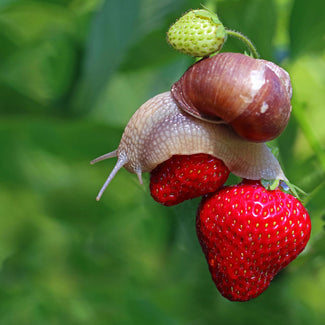
Pests & Diseases:
(See also the information under the individual plants and the Beneficial Insects[e] section)
• Keep an eye out for snails and slugs.
• Protect evergreen pears (Pyrus kawakamii) from fireblight.
• Control Argentine ants (the little black ones) now.
• Trap gophers now before the breeding season begins next month.
For more information, watch and learn: How to Identify & Eliminate Common Garden Pests

January is an excellent time to visit beautiful flower gardens in Orange County and beyond. There are many famous gardens in Southern California, and this is the perfect time to explore them and pick up some ideas for your garden.
Gardens that look terrific almost any time of the year include Sherman Library and Gardens (Corona del Mar), The Fullerton Arboretum (Fullerton), Los Angeles Arboretum (Arcadia), Huntington Library and Botanical Gardens (San Marino), and Quail Botanical Gardens (Encinitas)[h].
They closed, unfortunately.
In Huntington Beach and Laguna, make a visit to Niguel Botanical Preserve. Both of these are excellent examples of well acclimated plants for our climate and always fun to explore.
Mediterranean and California native plant gardens are entering their peak bloom season shortly. Rancho Santa Ana (now called the California Botanic Garden) in Claremont will begin showing some color this month.
Attend any of several rose bush pruning demonstrations throughout the area.
If you have not visited a California native plant garden before, now through March would be an excellent time to visit. A couple of the best are Rancho Santa Ana Botanic Garden (now called the California Botanic Garden) in Clairemont and The Santa Barbara Botanic Garden in Santa Barbara.
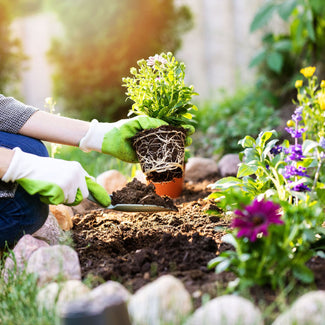
Planting:
• (See also the information under the individual plants)
• One of the best months for planting California native plants. They establish quickly in the cool, moist months, aided by winter rainfall.

Records, Catalogs, Books, and Organizations:
• Most serious gardeners keep some sort of a journal of their garden activities. Usually, these are set up in a month-by-month sequence and include random notes about the garden each month, additions and deletions to the garden, what is blooming, suggestions for the future, a record of fertilizations, and notes about the weather. If you don’t have a journal, well-stocked nurseries should have two or three different versions in stock.
• If you don’t have at least one gardening wall calendar, this is your last chance to pick one up, they’re usually on sale in January.
• Buy Pat Welsh’s “Southern California Organic Gardening.” Completely revised in 2009, this 468-page book is as essential as a spade and a pair of pruning shears. It’s written in a monthly format and is specifically for southern California gardens. Pat Welsh is perhaps the queen of southern California gardening, and every gardener should have a dirty, dog-eared version of this terrific book somewhere near the garden. This book is now out of print, but can usually be found online.

Water & Irrigation:
• (See also the information under the individual plants)
• In January, rainfall should do just about all your watering for you.
• Automatic sprinkler systems should still be set on “manual” and only used as needed.
• Check potted plants regularly—especially baskets under your gutters, which do not get the benefit of our winter rains.
For more information, watch & learn:
CA Friendly Solutions | How to Install & Use High Efficiency Sprinkler Heads with David Rizzo & CA Friendly Gardening Solutions | Testing Your Sprinkler System with Tracy Wankner




